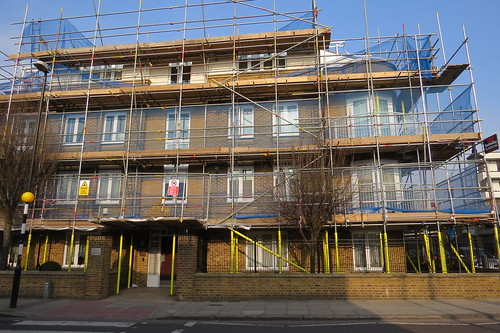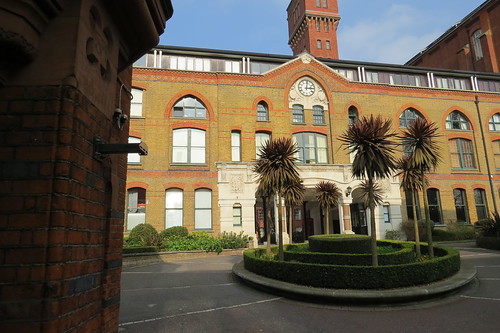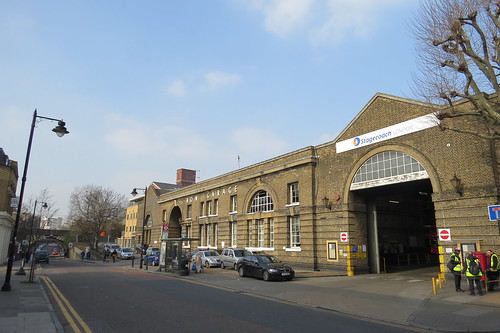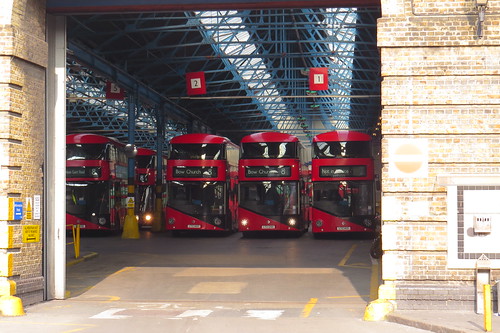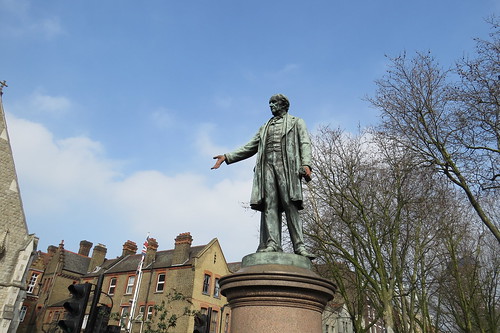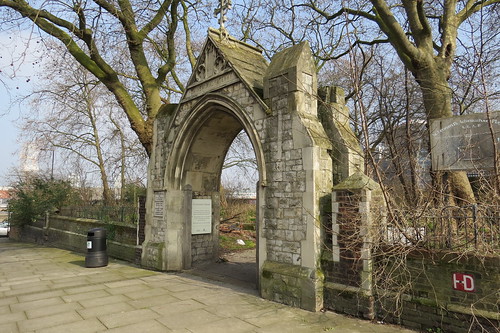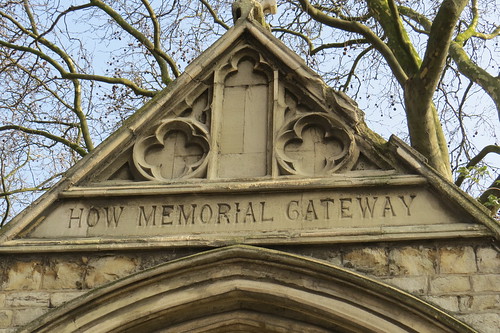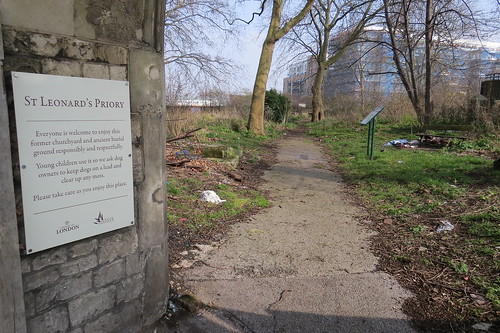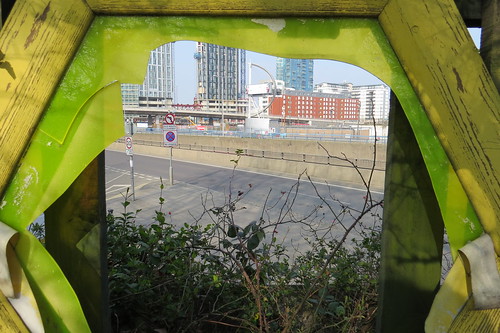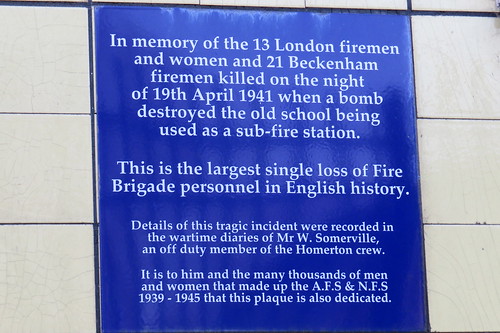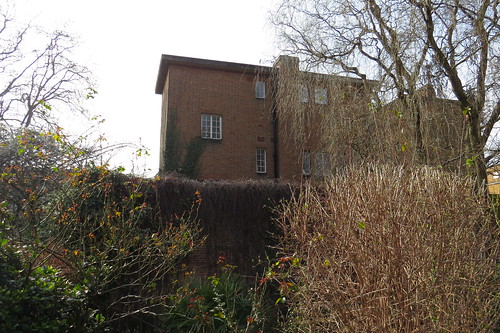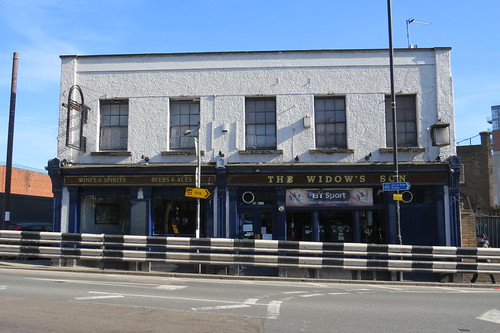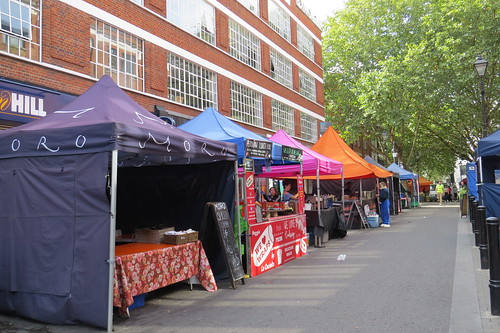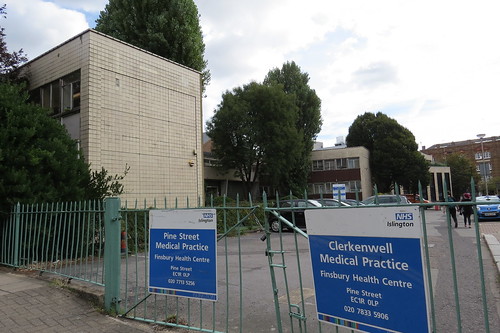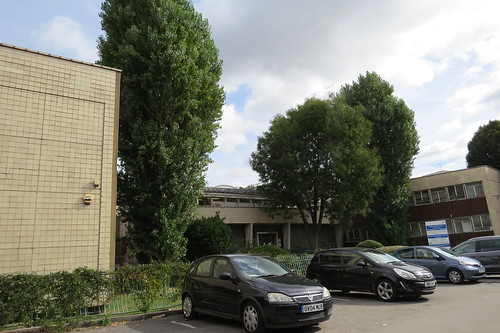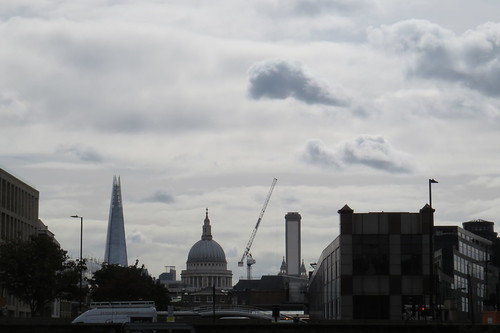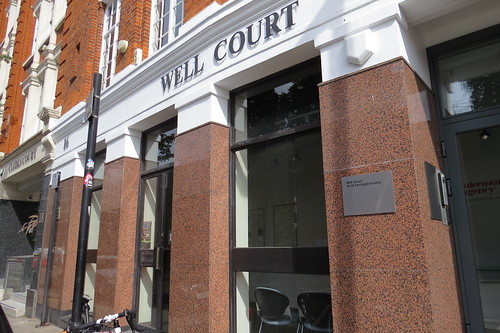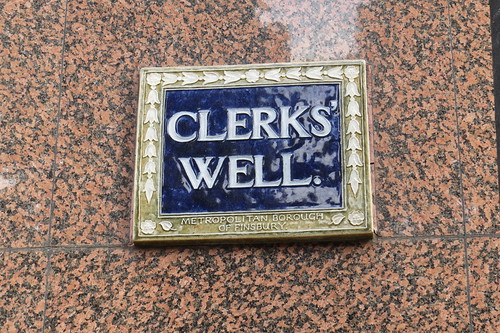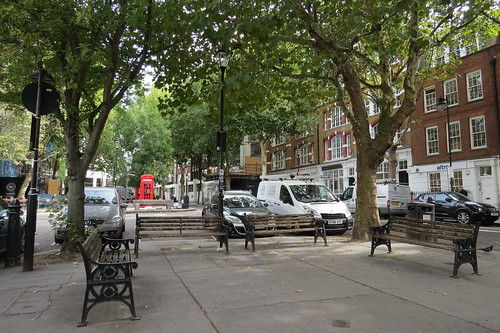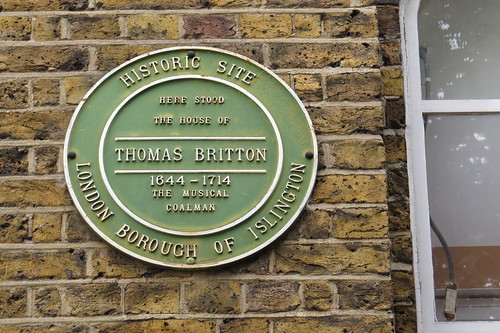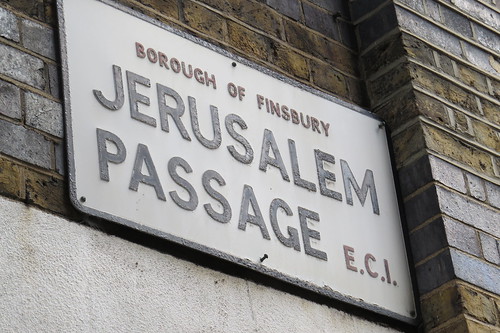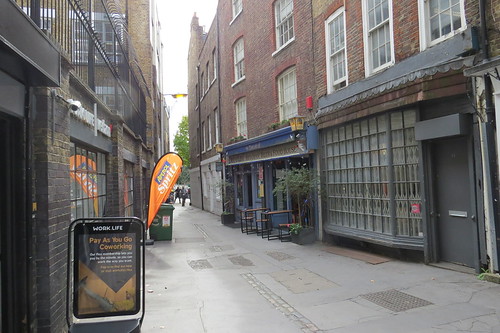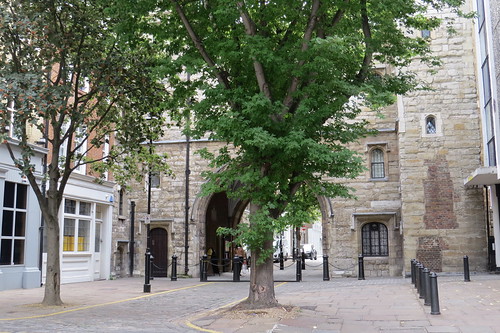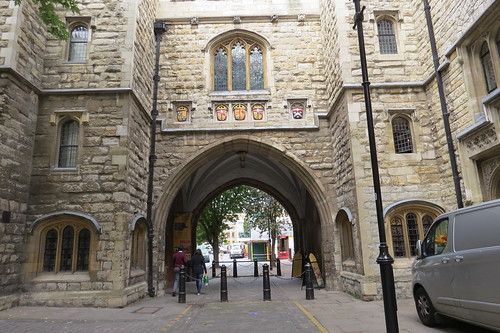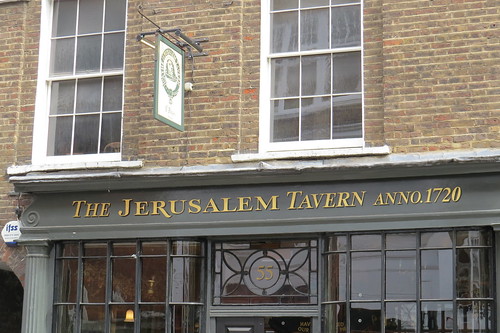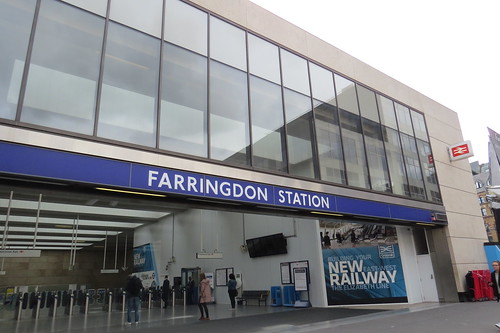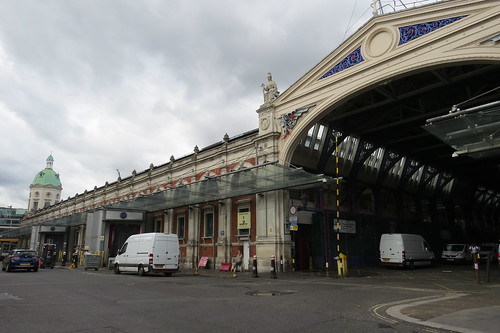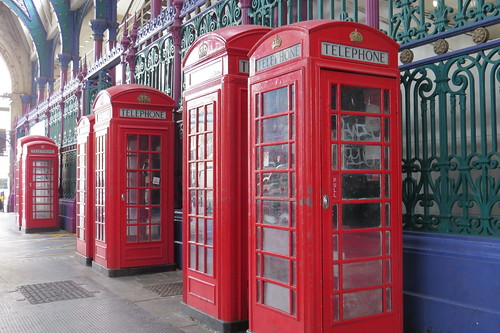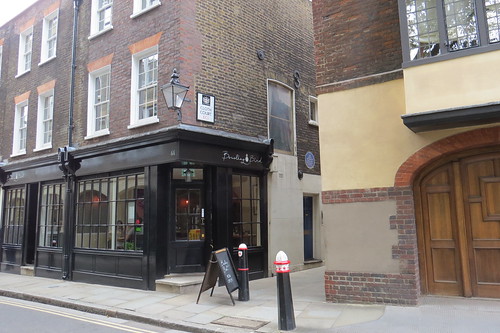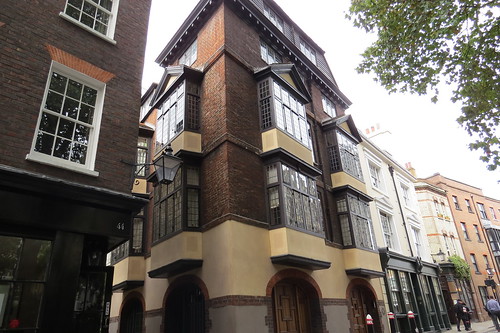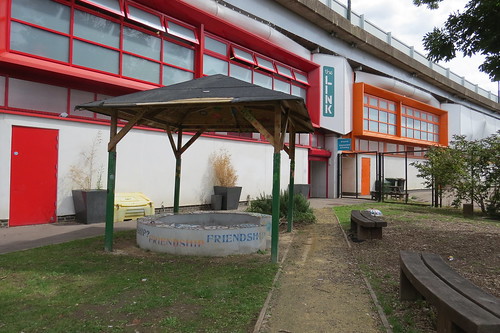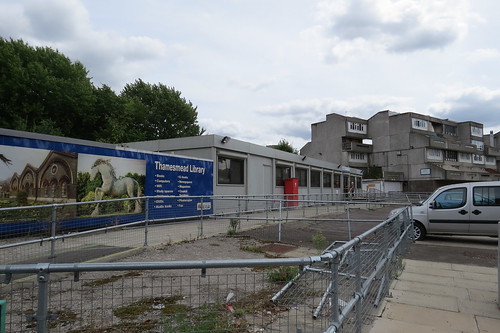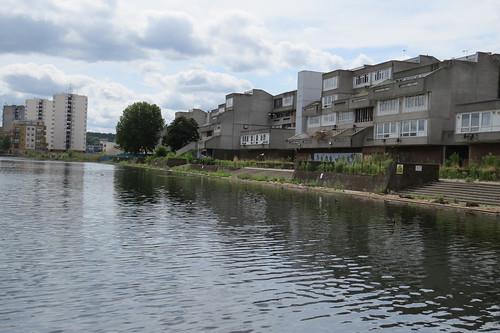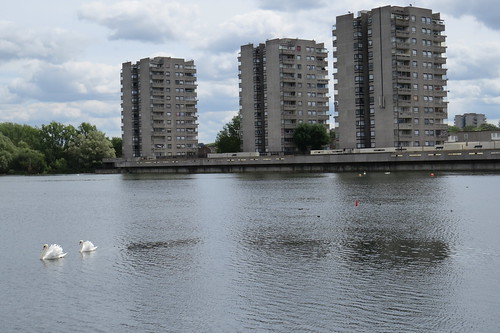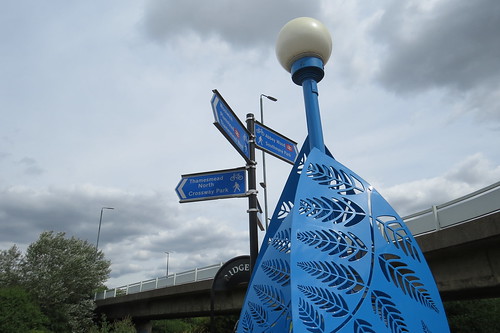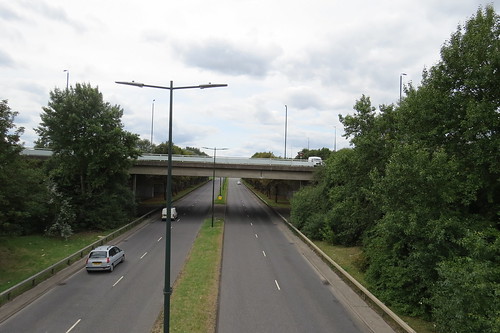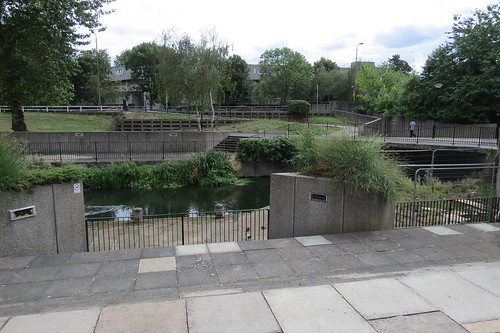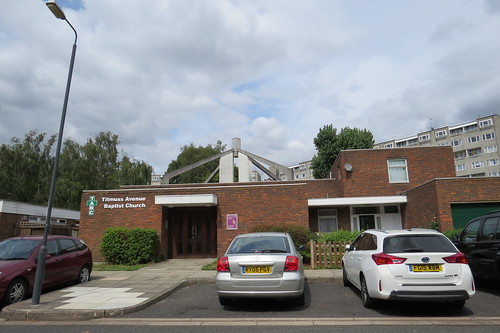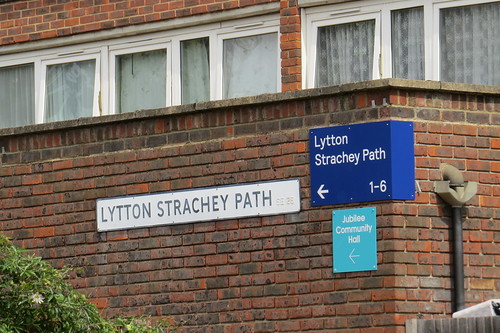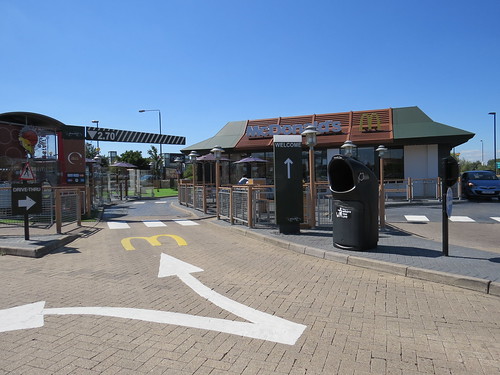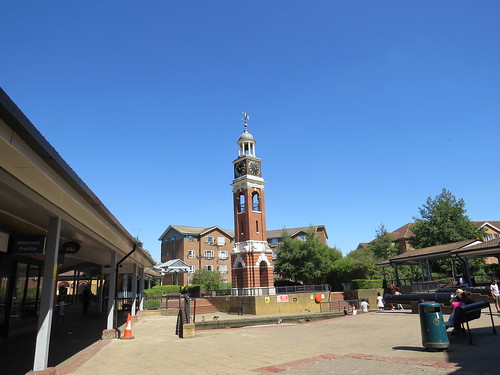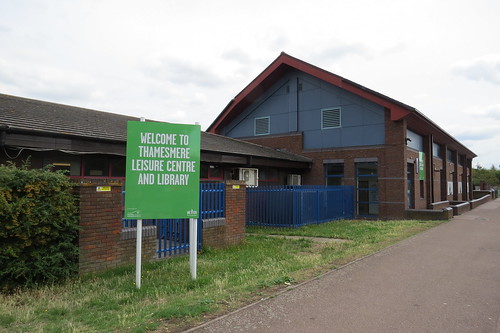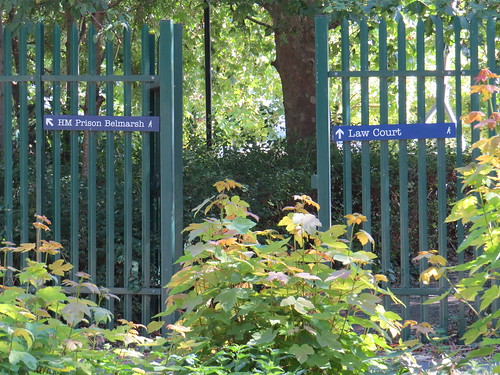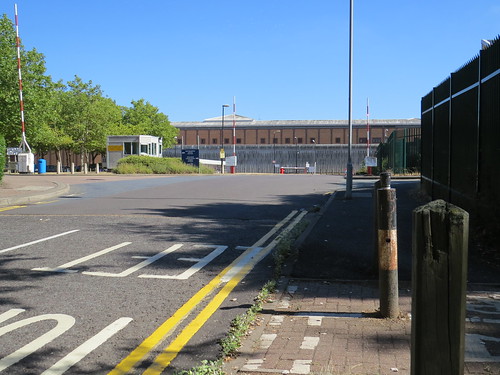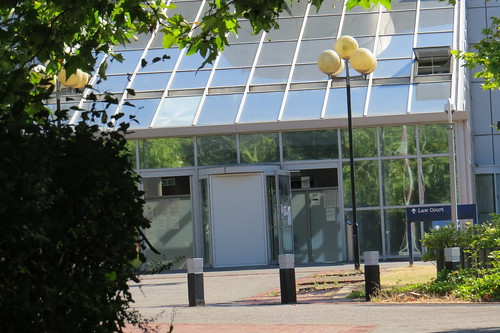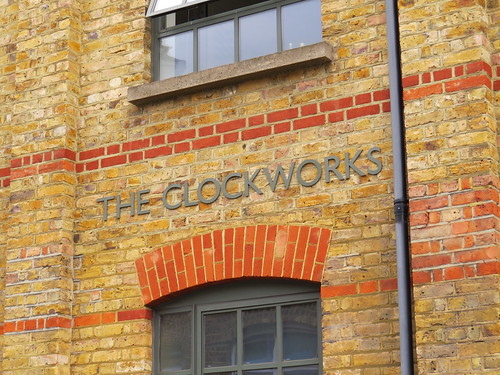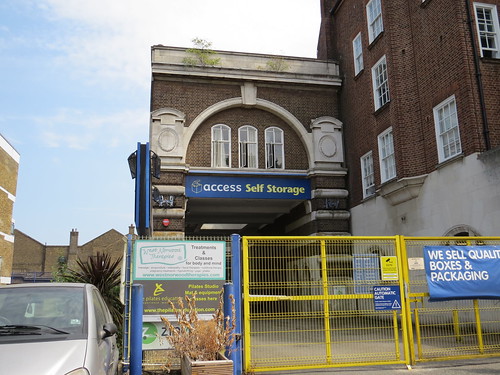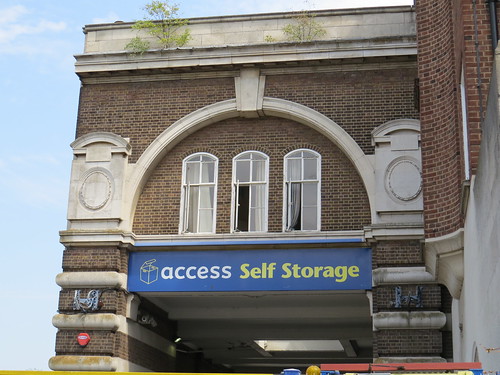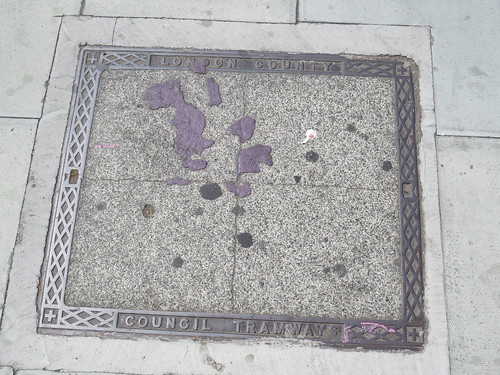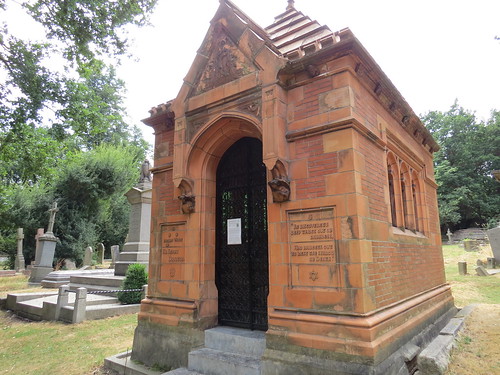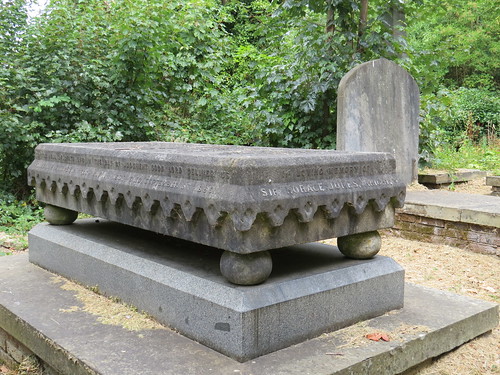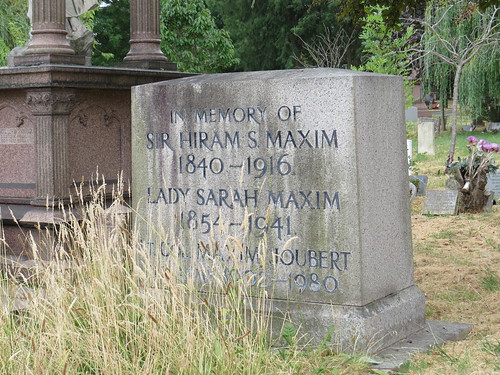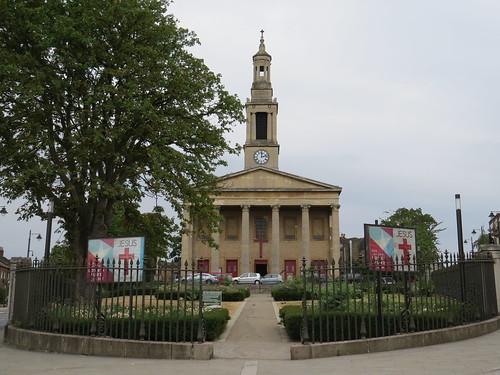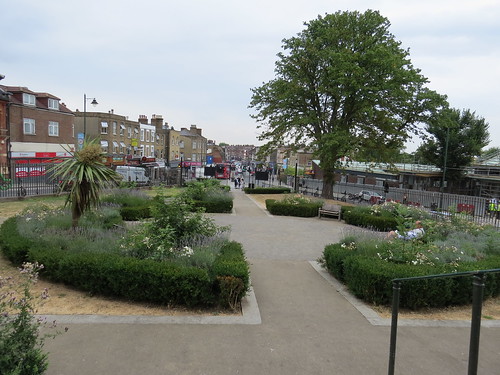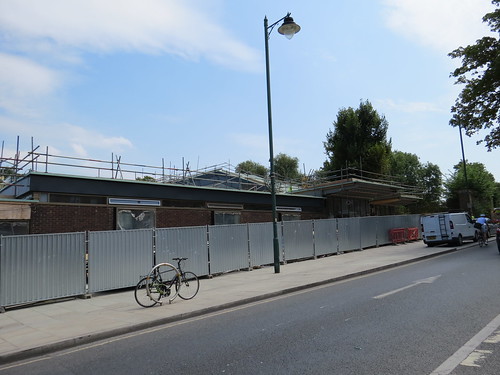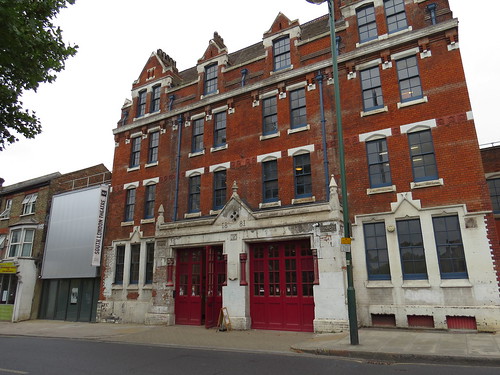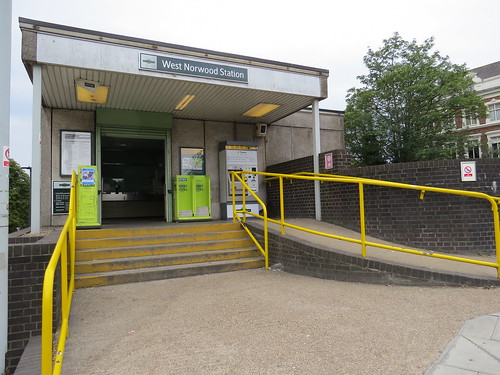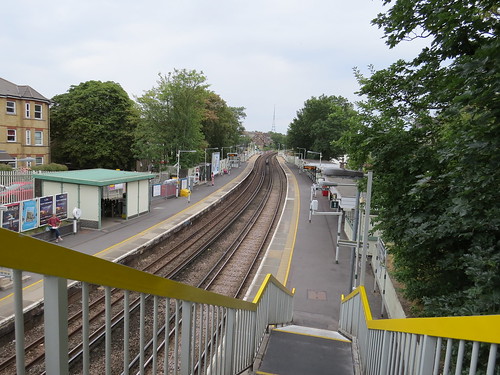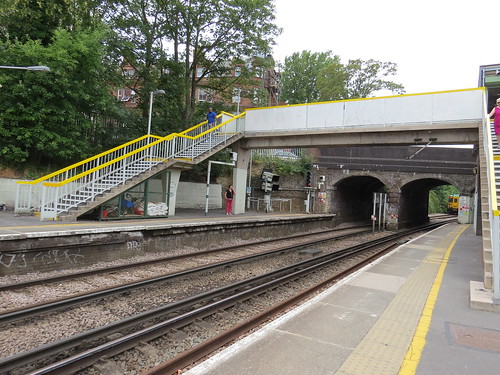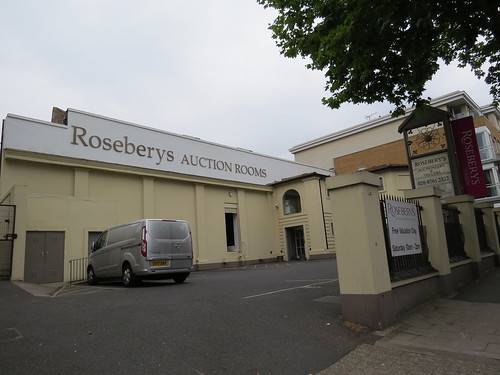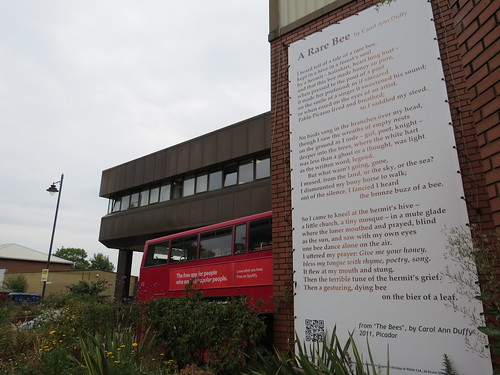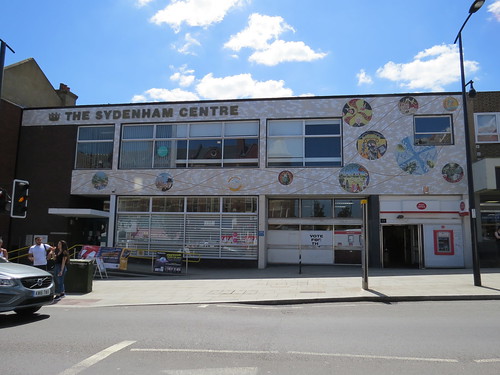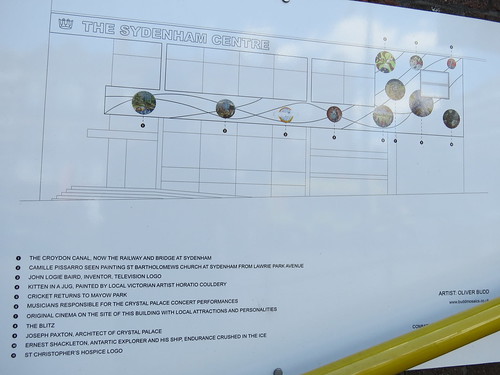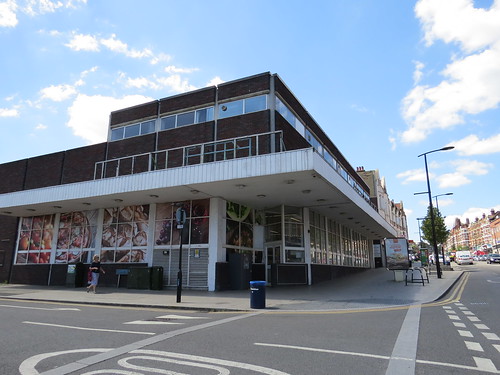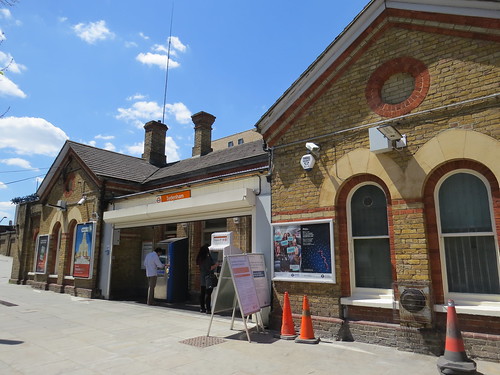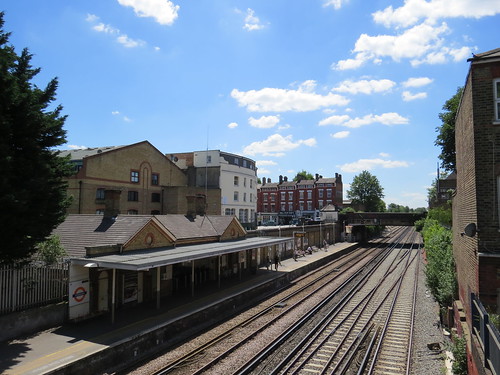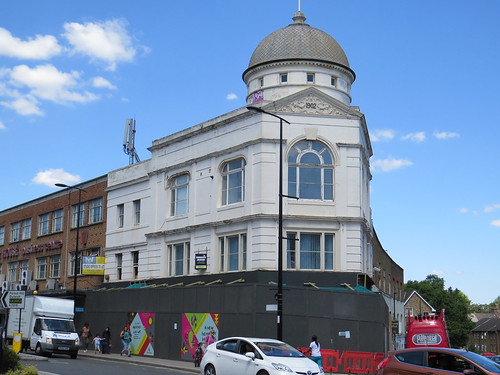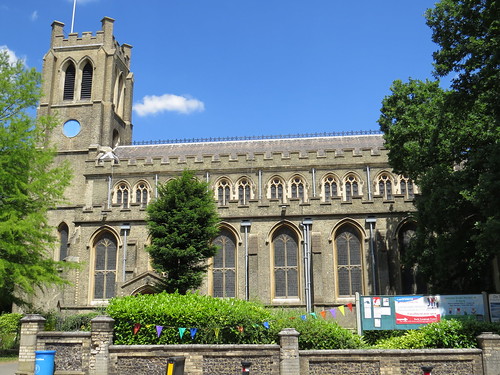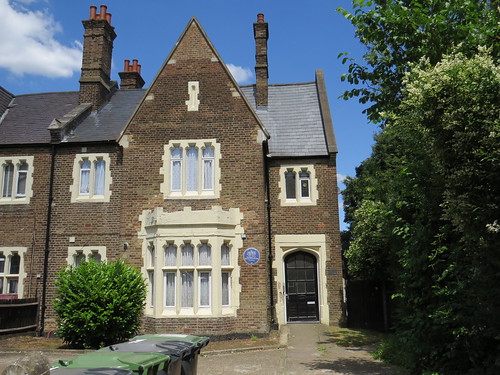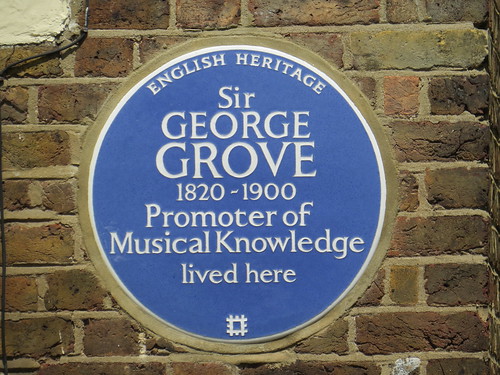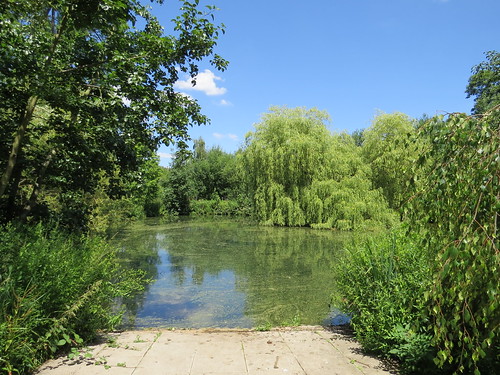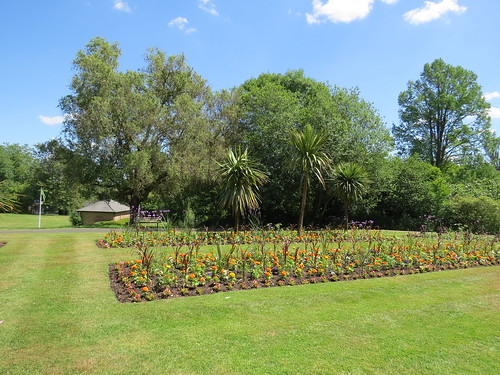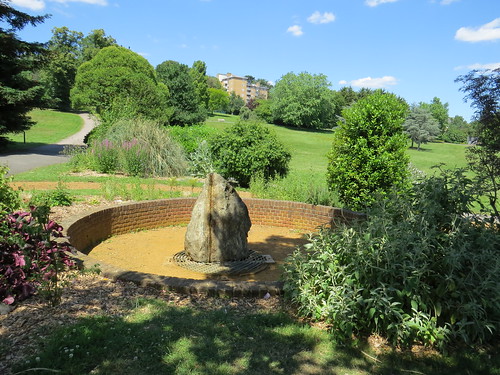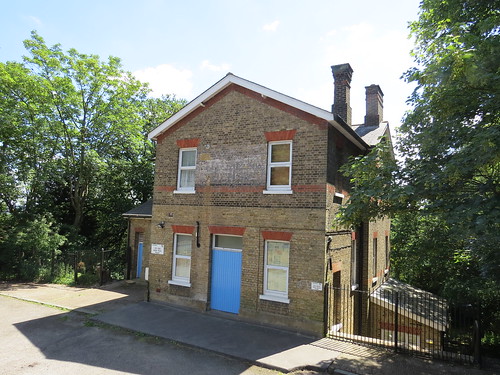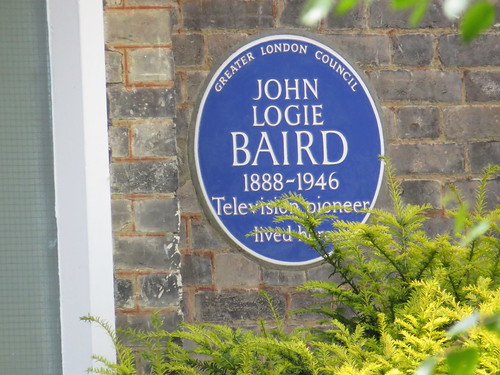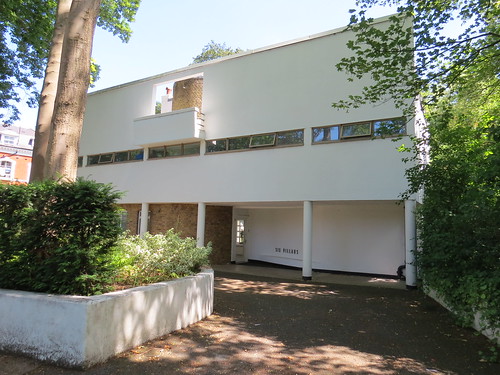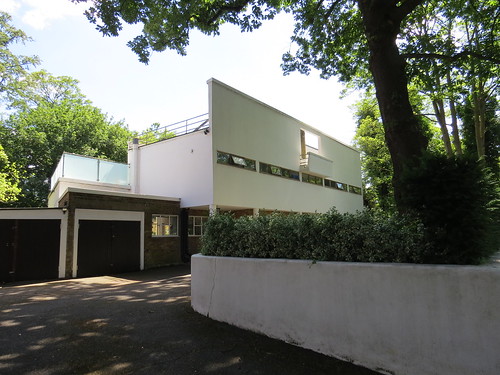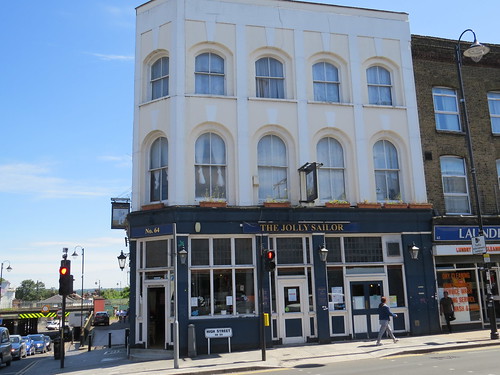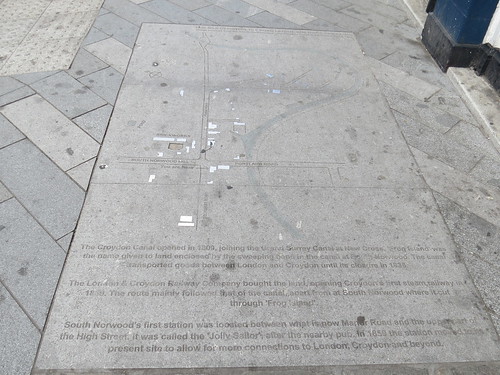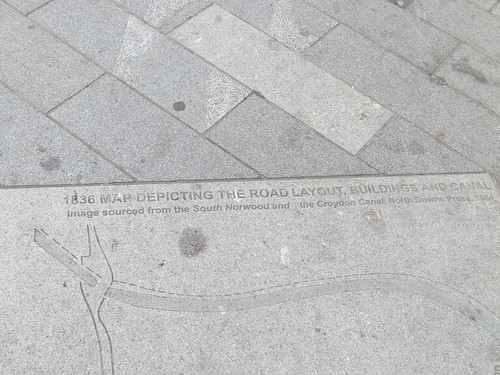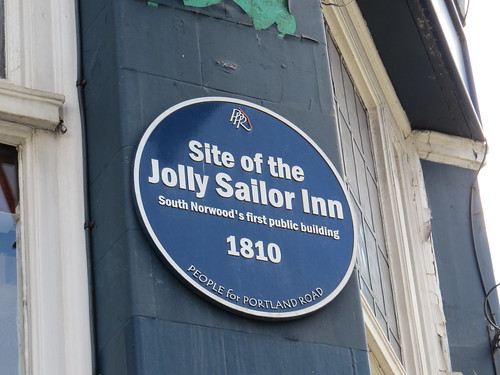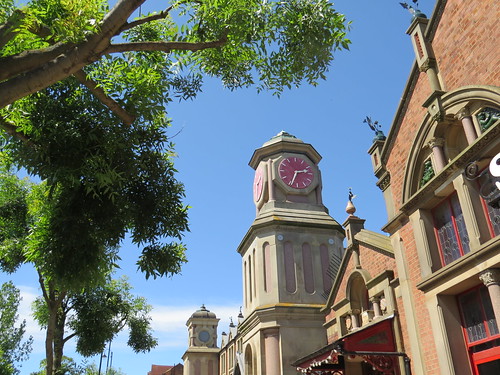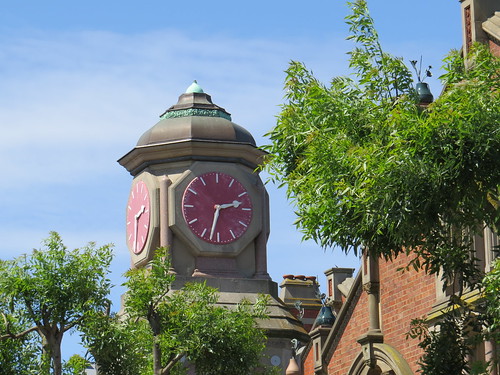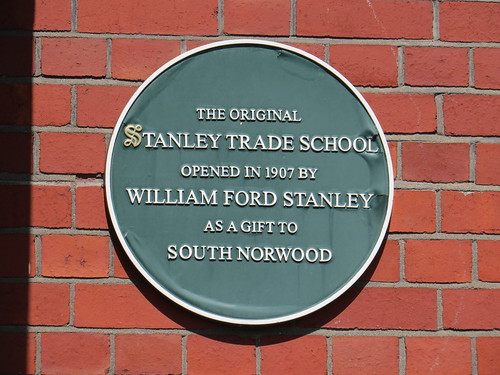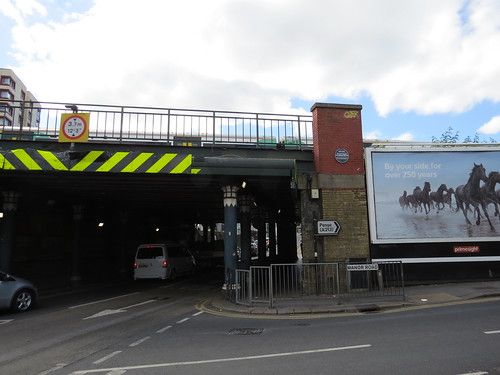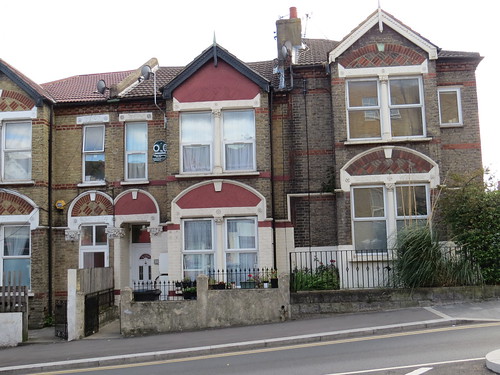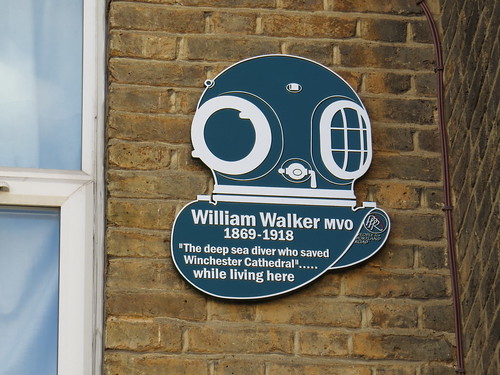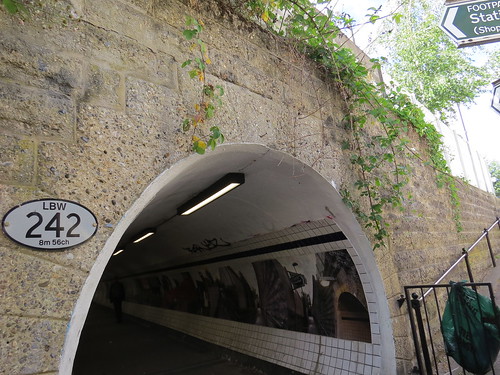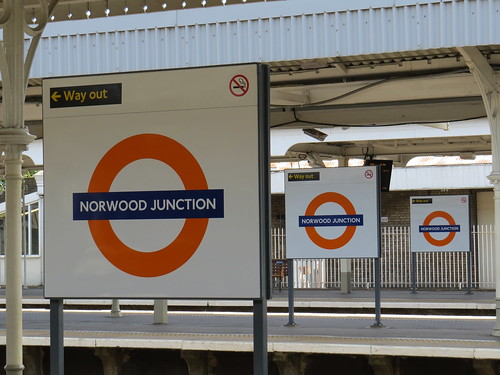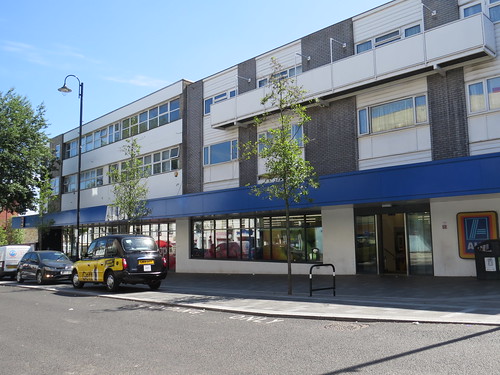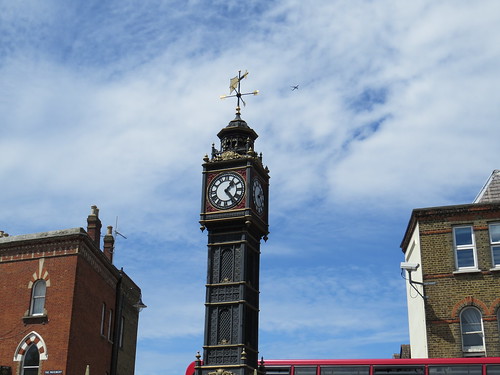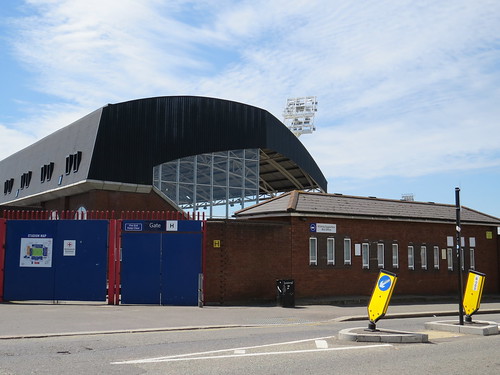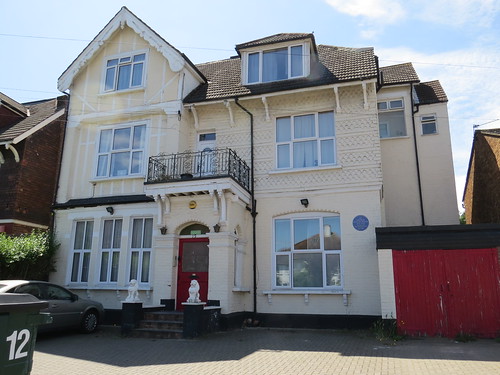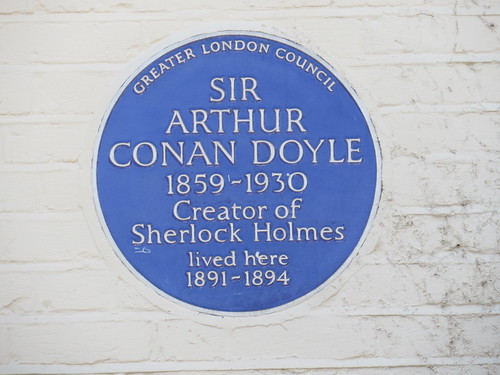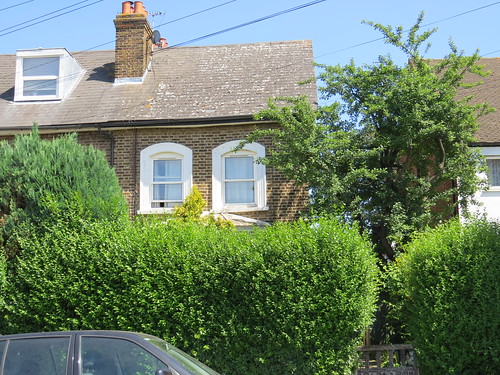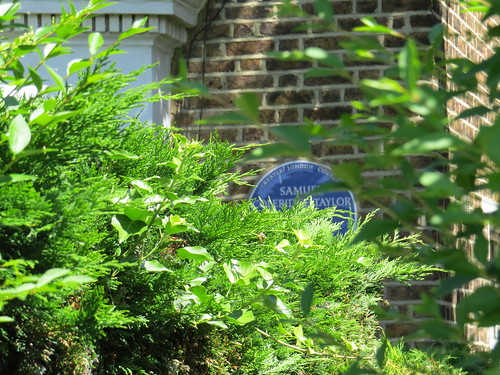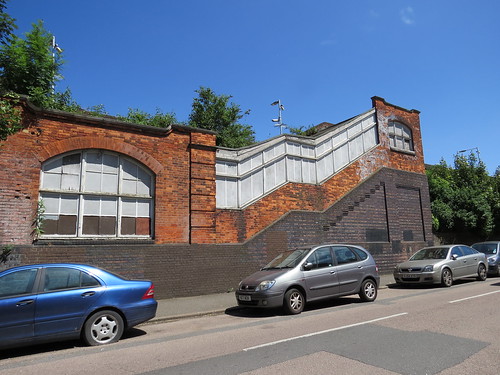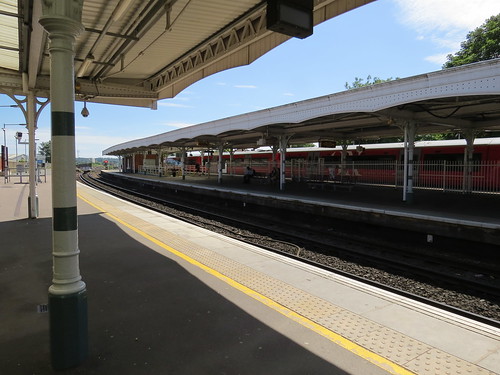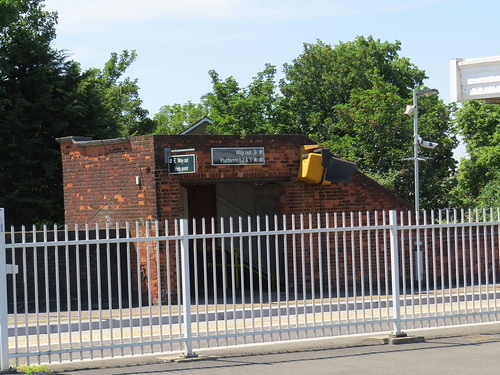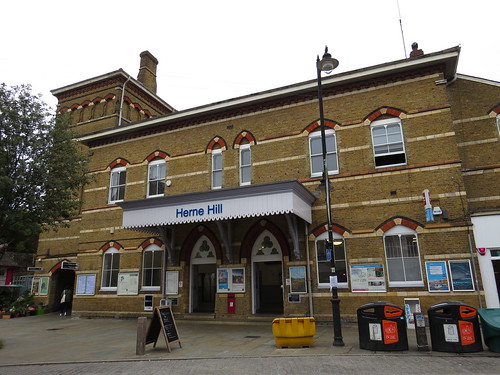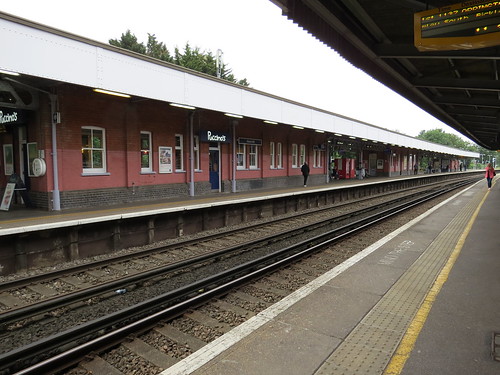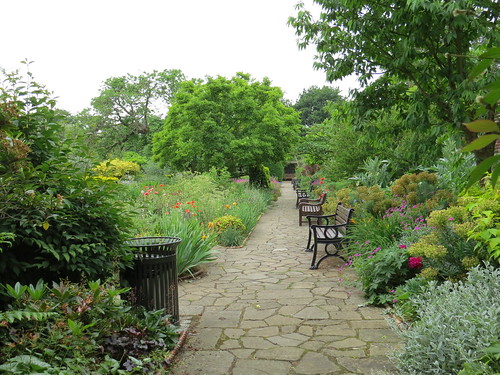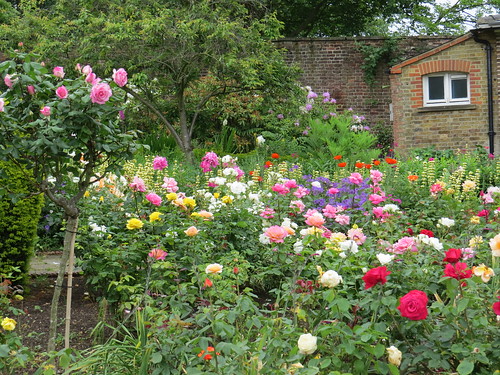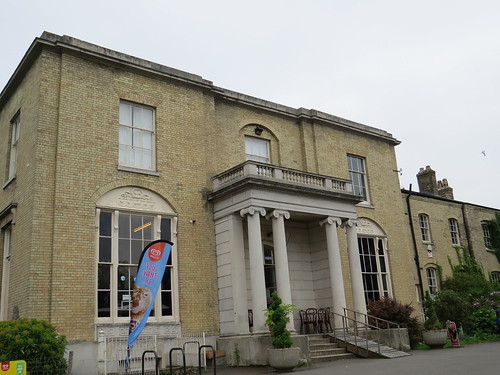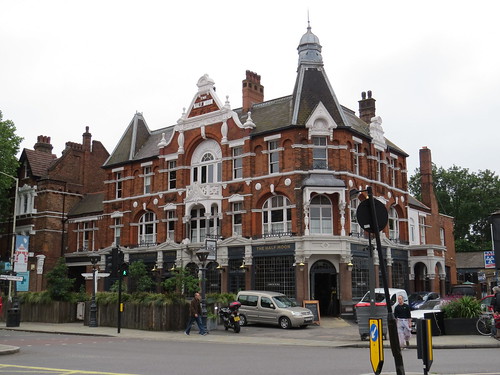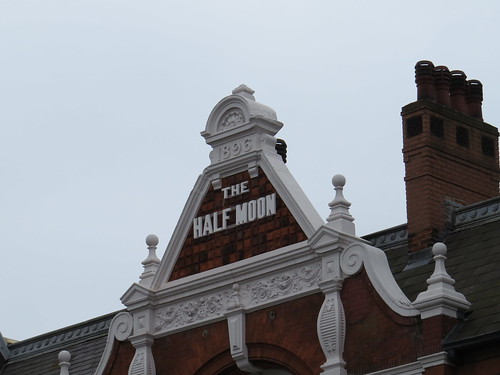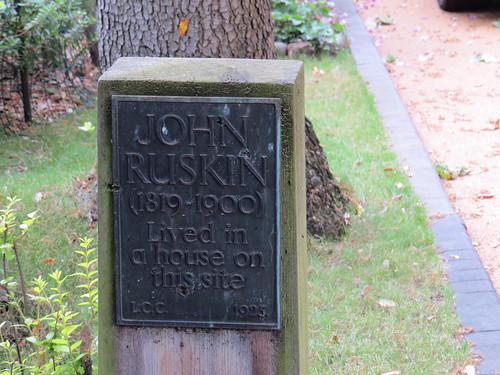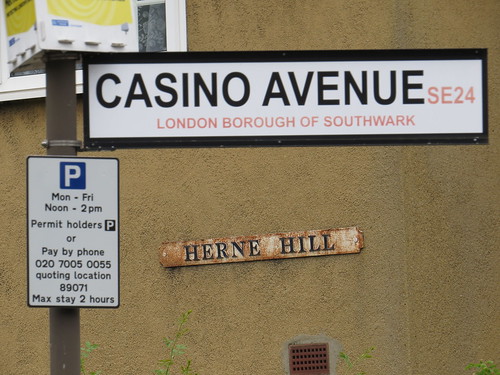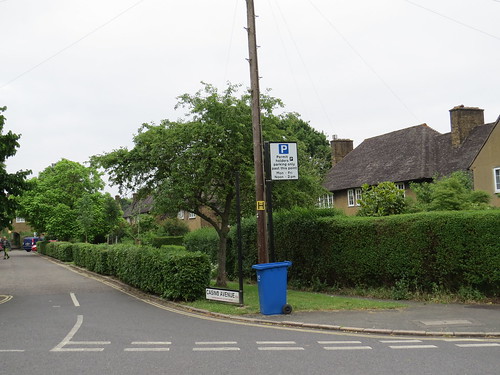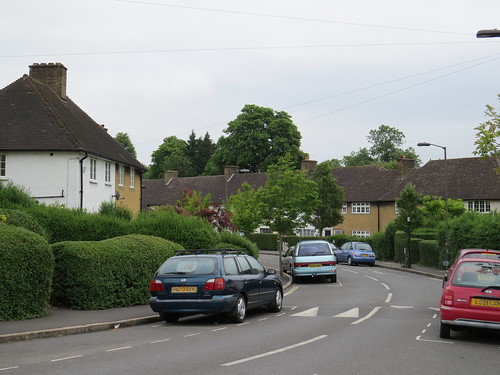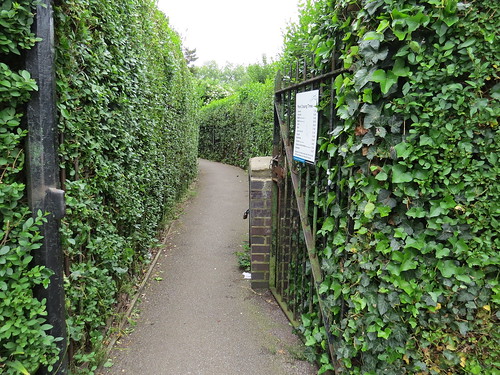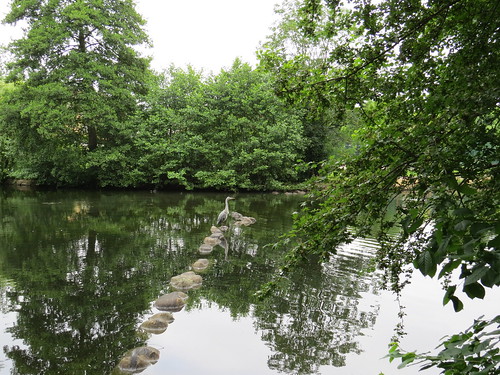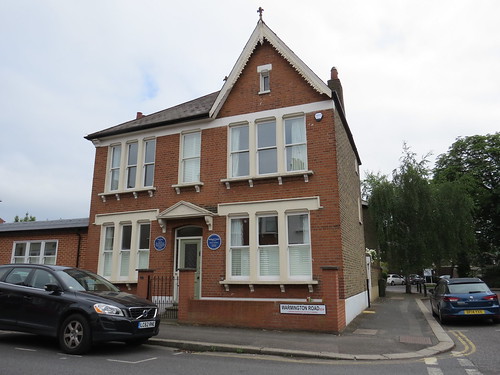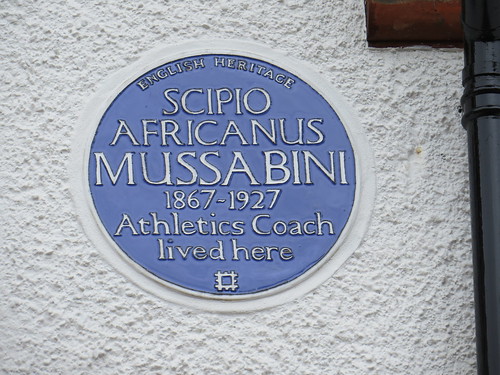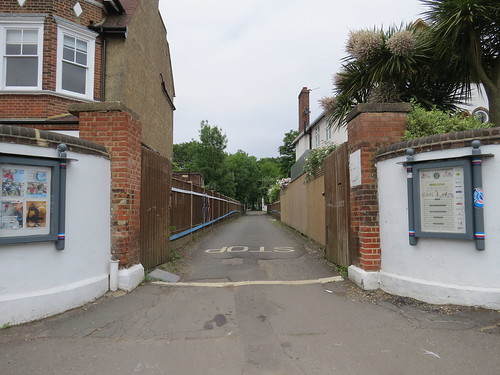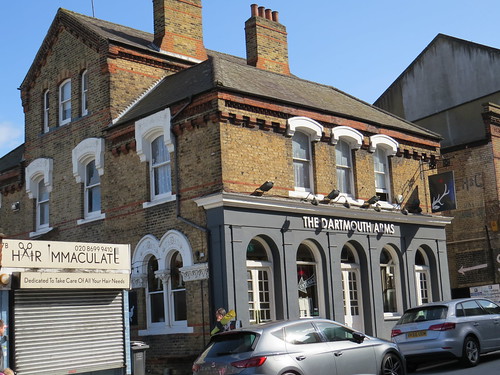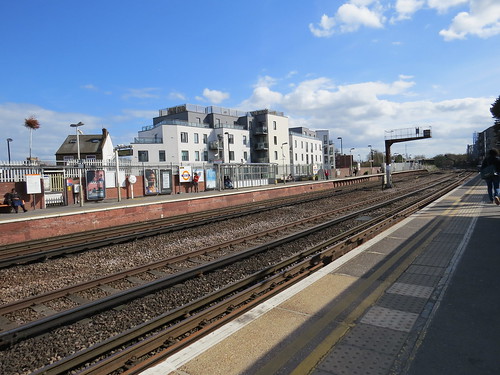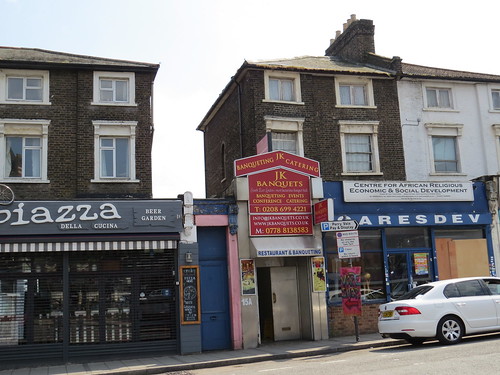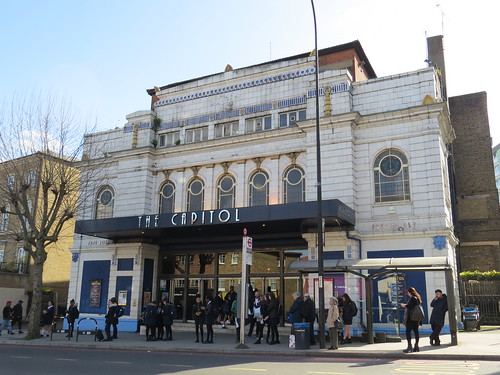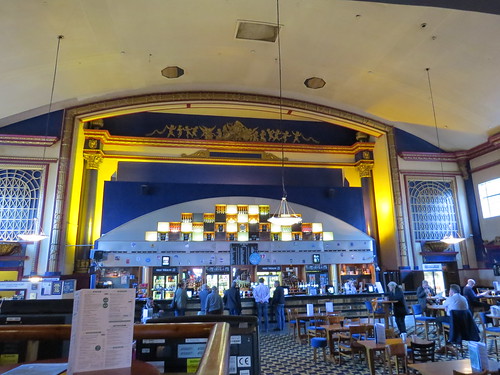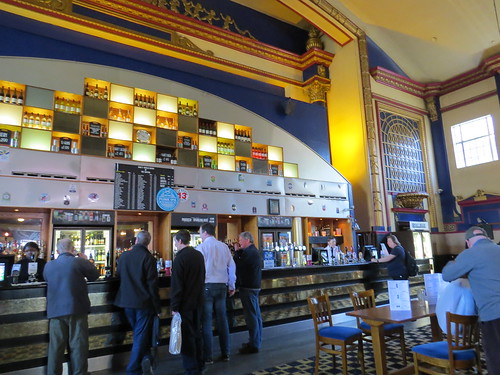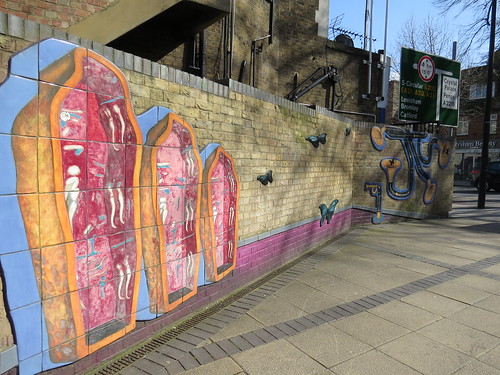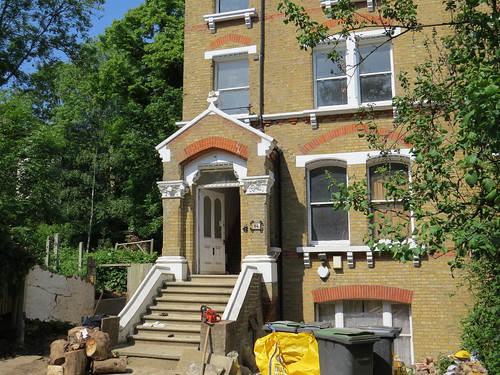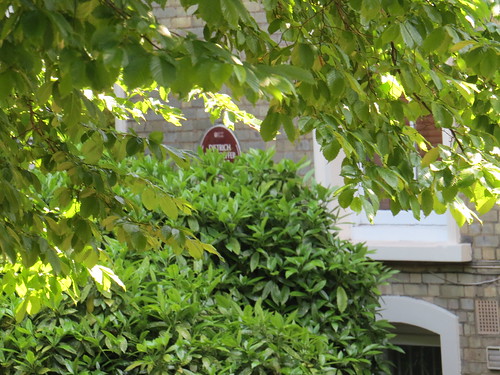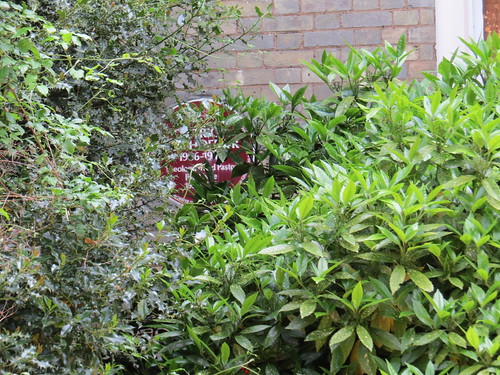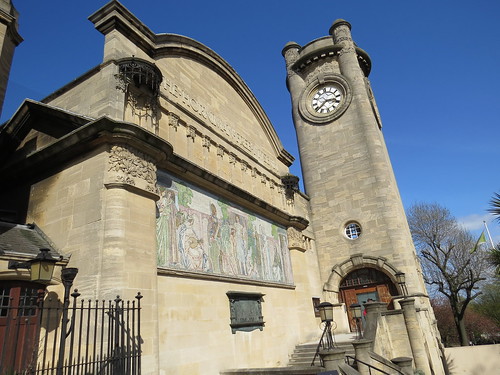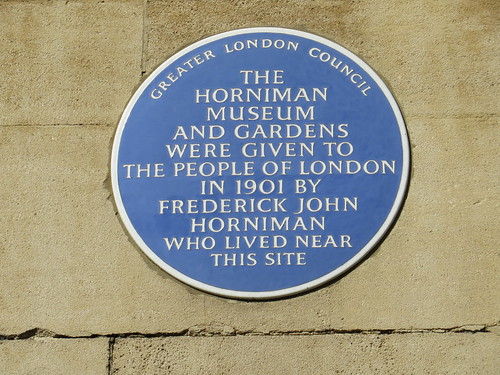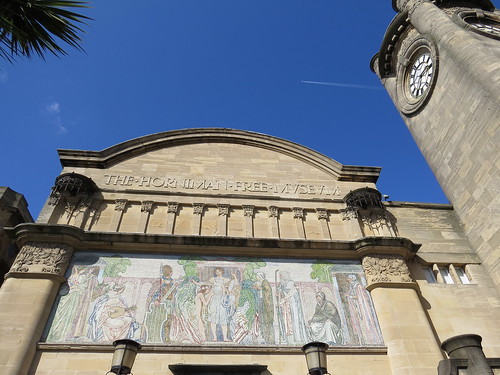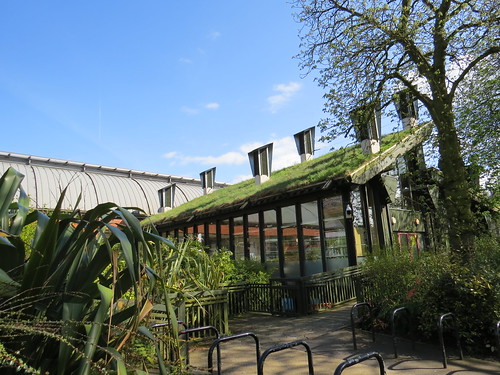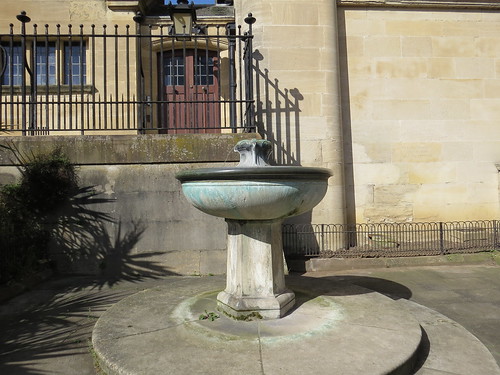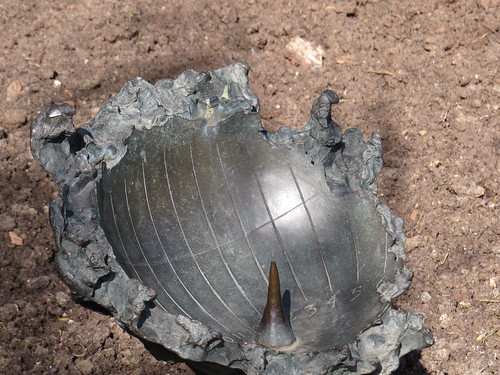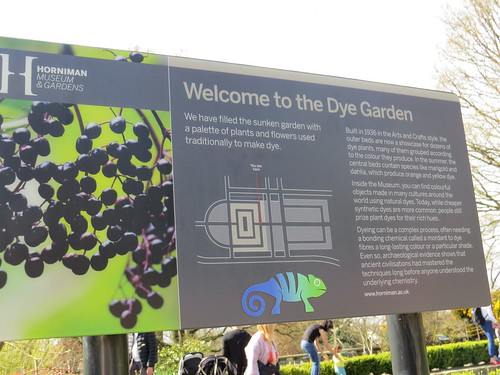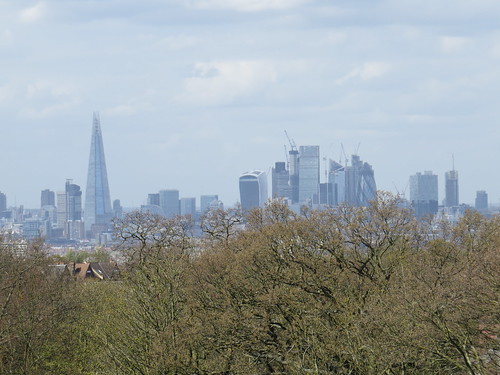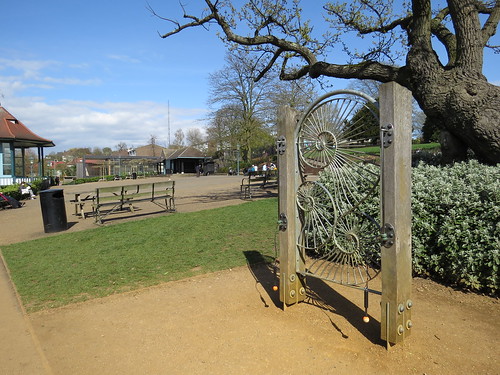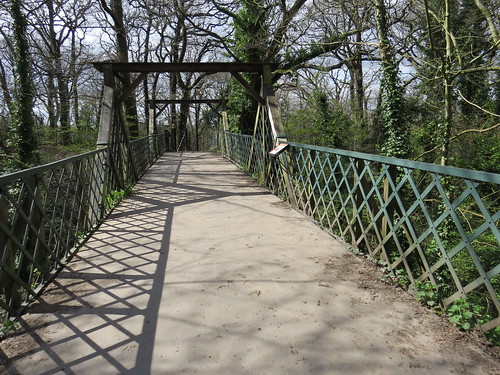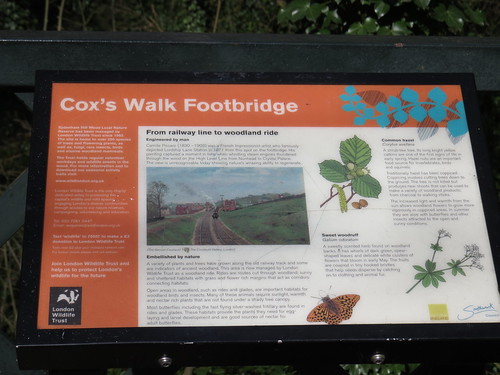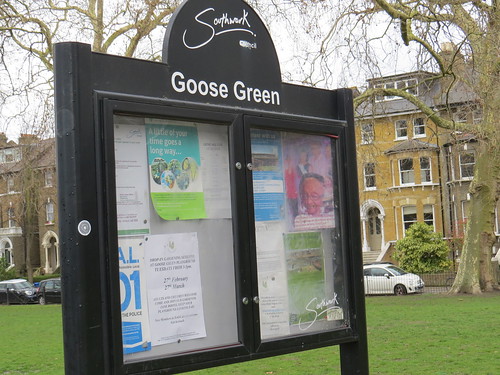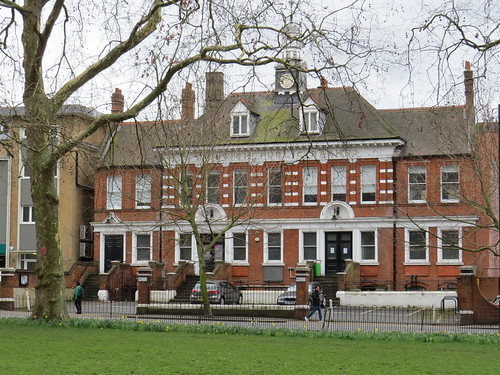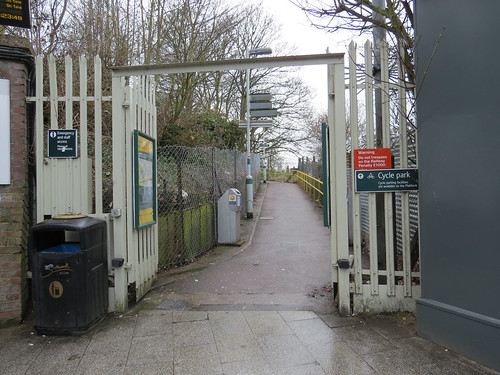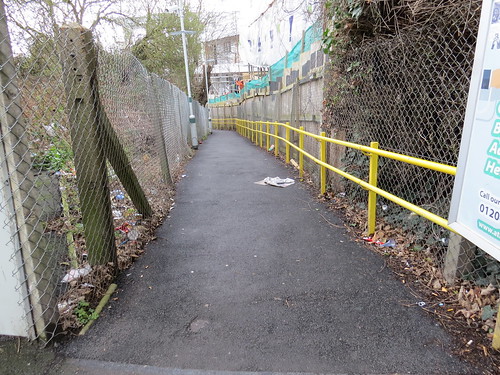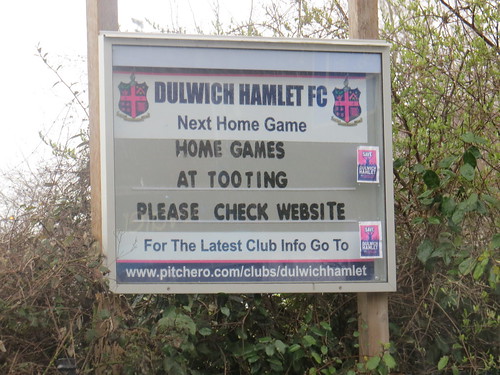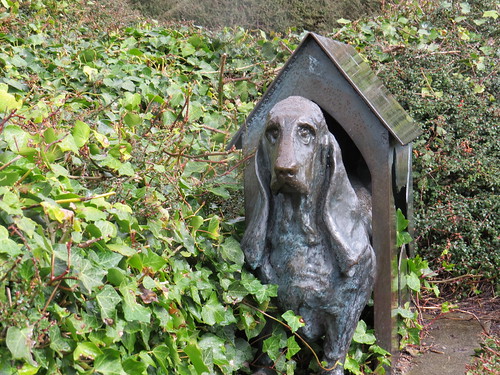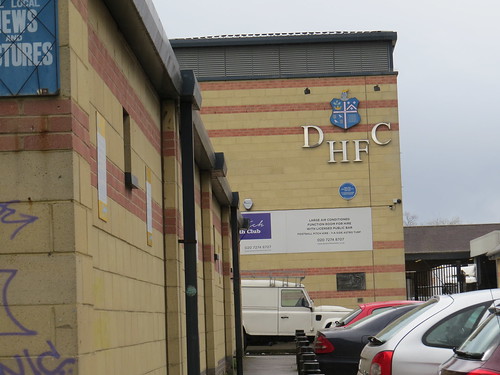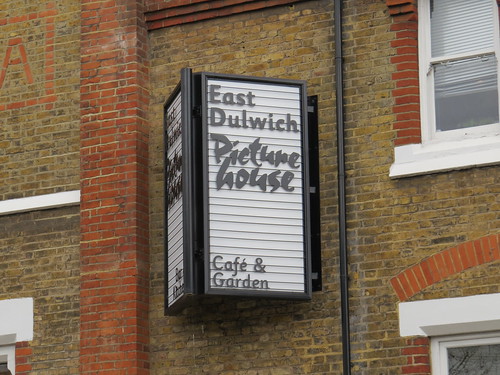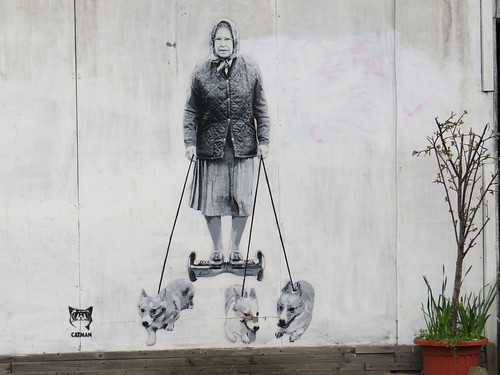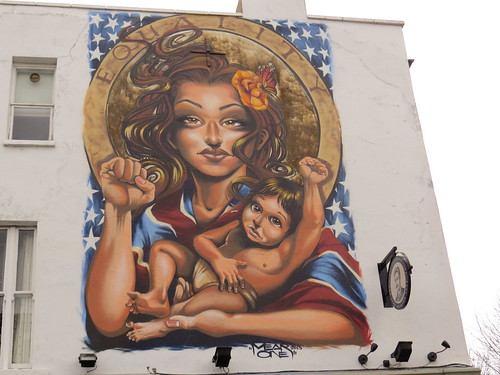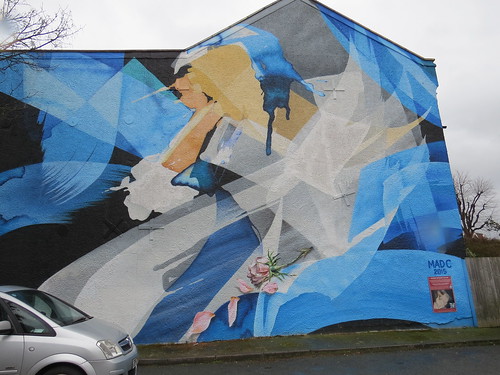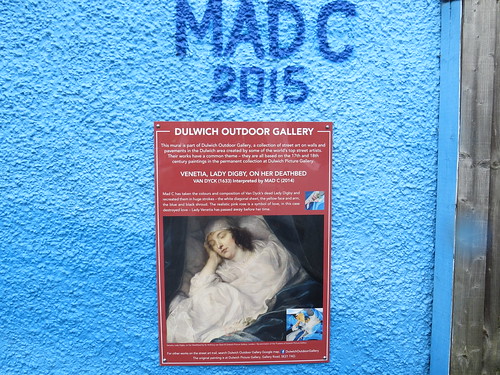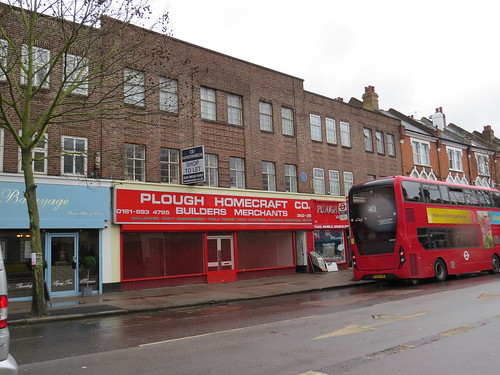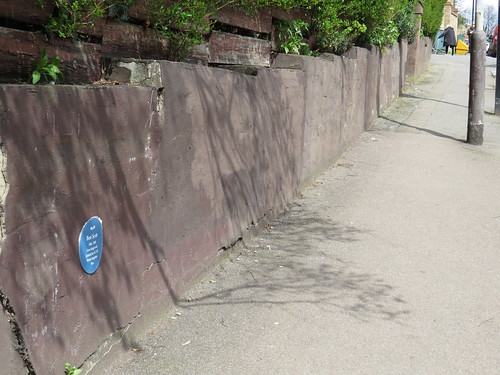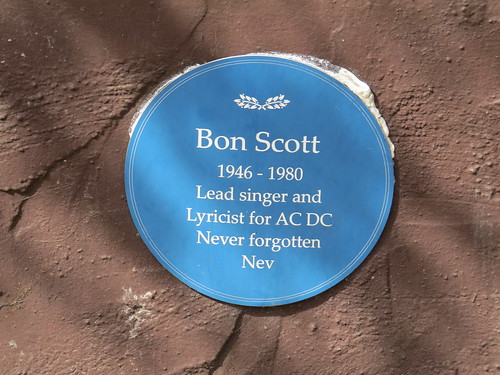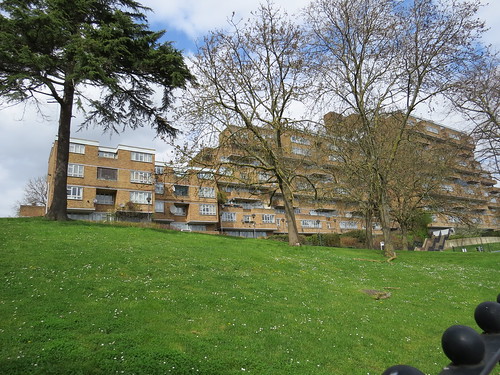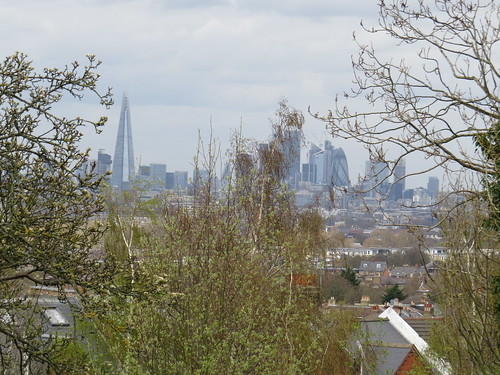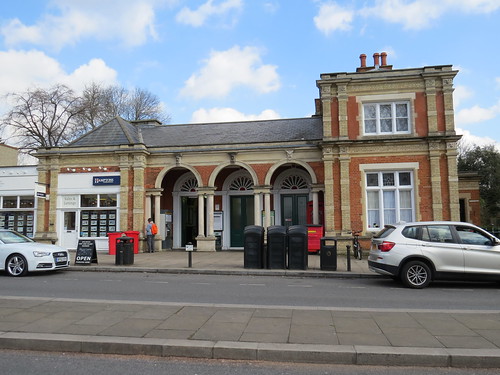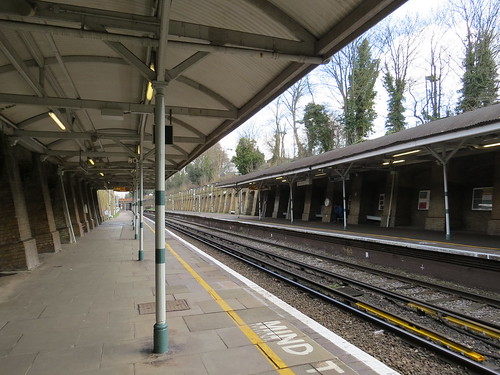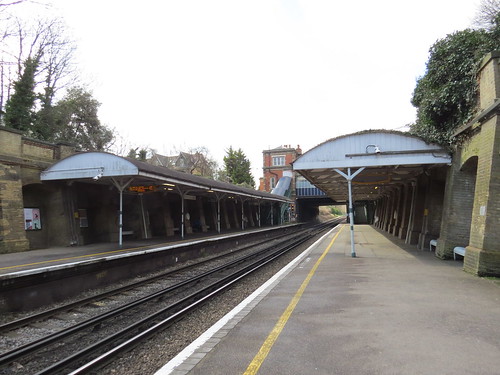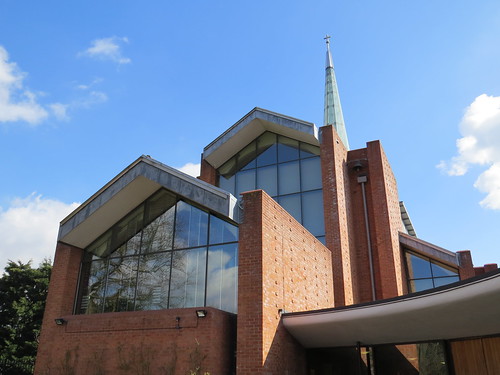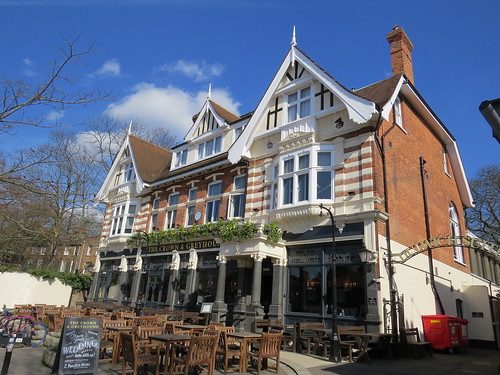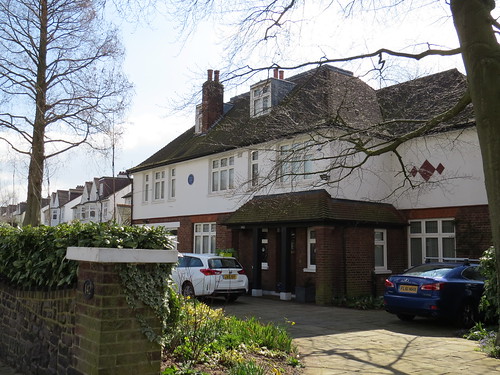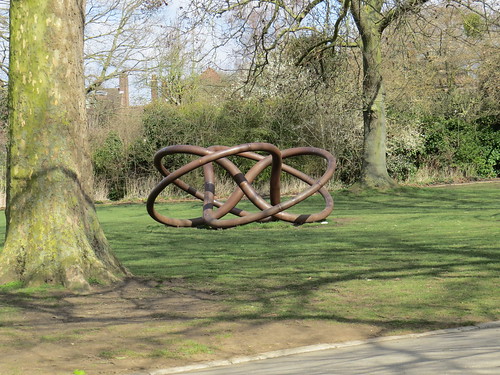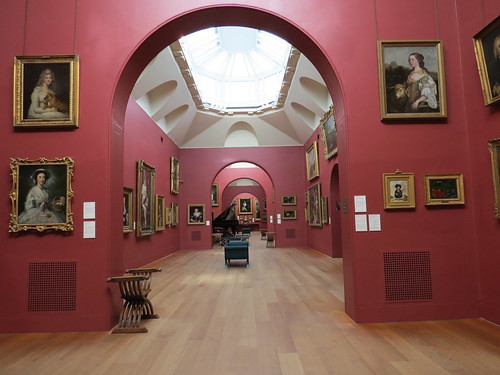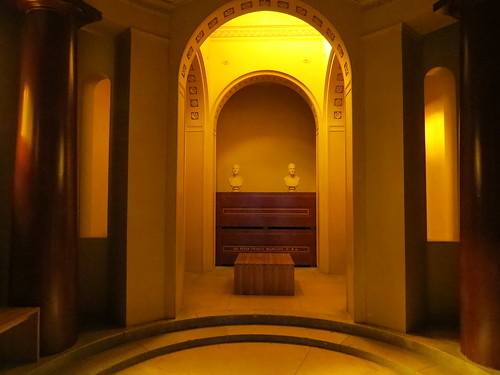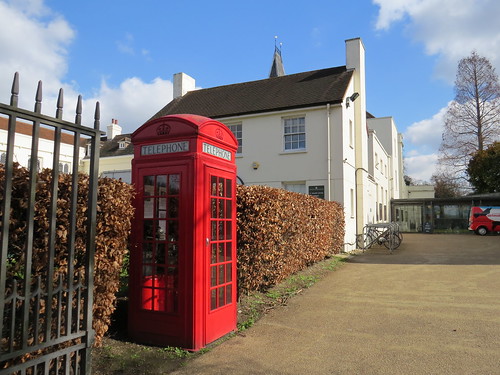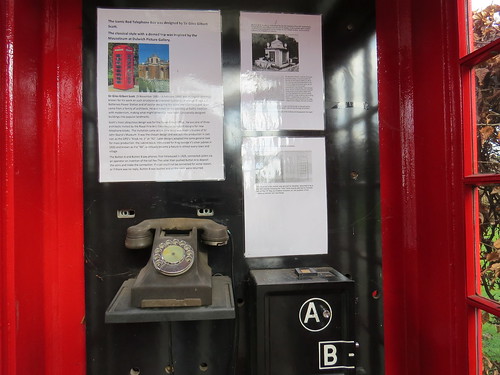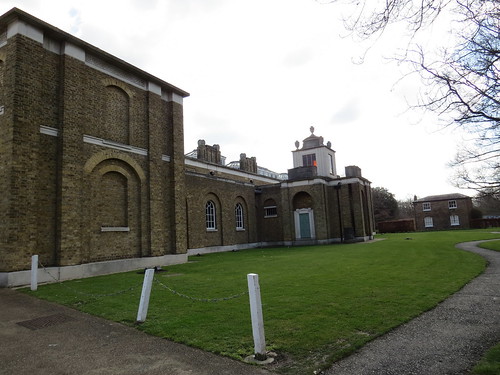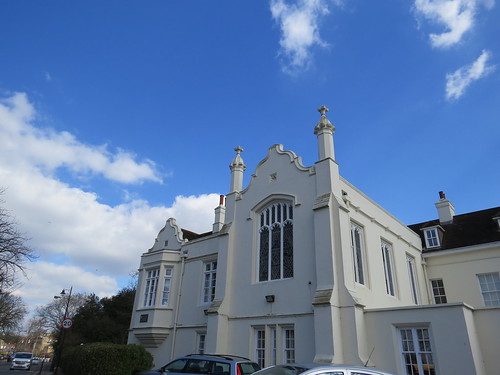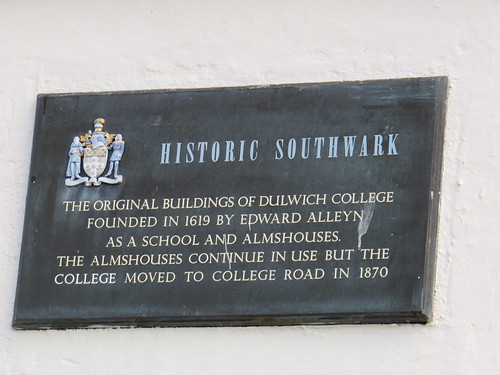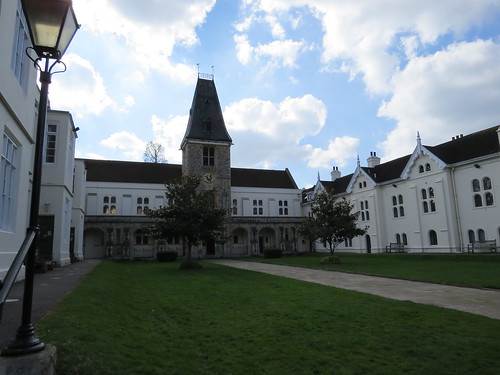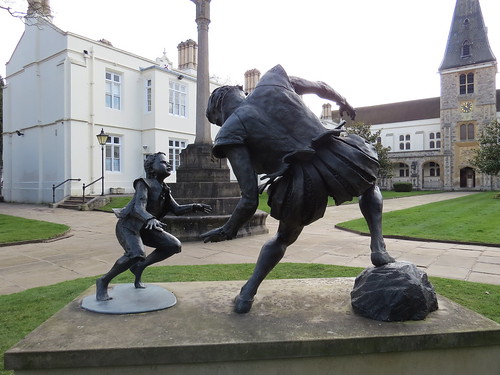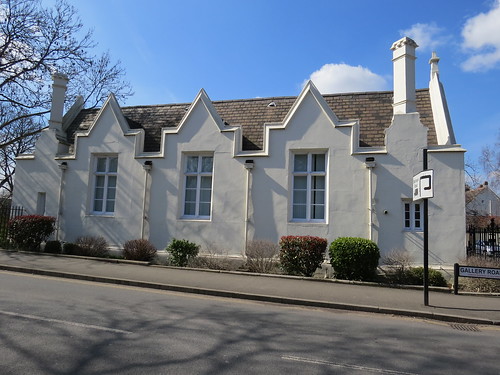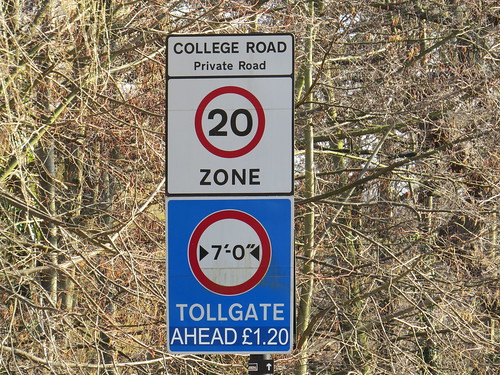SE20 is Anerley according to the Post Office, but it also includes Penge which is somewhat better known. Poor Penge has been the butt of comedians’ jokes for years. But then it is a funny sounding name. Just saying it out loud makes people snigger.
I came across a great website from a group called the Penge Tourist Board (PTB). The PTB is a community led group created to promote and improve culture, commerce and the environment for residents, visitors and businesses of Penge.
There is an interesting post on this site about the origins of the name Penge:
http://pengetouristboard.co.uk/would-penge-by-any-other-name-smell-so-sweet-the-origins-of-the-p-word/
Penge it would seem is the only pre-English, British place name in Greater London. Most places around here have English names. Beckenham, Bromley, Croydon, Dulwich and Sydenham are all modern versions of place names which go back to Anglo-Saxon times. But Penge is older still. It derives from the British language spoken by the native population before the Anglo Saxon settlement, the language from which modern Welsh is descended.
The name has two parts. The ‘Pen’ part means “head” or “hill” or “high” or possibly “end”. The ‘ge’ part is a squashed survival of the word “coed” which means “wood”. So now you know!
We start our walk at Penge Post Office which is at 100 – 102 Penge High Street. Turn right out of the Post Office. Our first stop is soon on the right.
Stop 1: Empire Square/Blenheim Shopping Centre
Amazingly there used to be a variety theatre here in Penge, where now stands this ugly concrete shopping parade..

It was called the Empire and all there is to remind us of this today is a street name.

The strange thing about this square is that it is not really a square – rather it is a scrappy pedestrian way to a rather odd development called the Blenheim Centre, which sounds very grand but turns out to consist of a short Mall with about four shops.
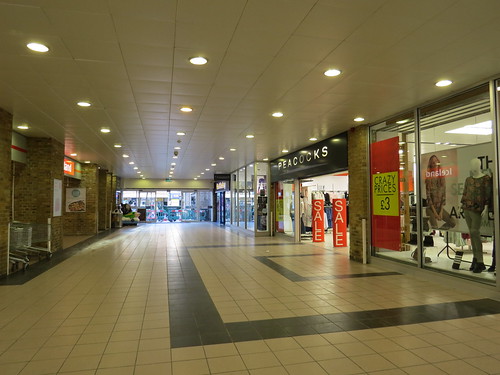
The Penge Empire was designed by well known theatrical architect W G R Sprague. According to the wonderful Arthur Lloyd site, it had been conceived in 1913, but did not open until April 1915 due to the outbreak of World War One.
The Empire was taken over by Gaumont Theatres in May 1928 but continued in live theatre use, although at some point a projection box was built into the stage for the rear projection showings of films.
In December 1946 Moss Empires took over the lease of the Theatre and repaired some damage which had been caused in the blitz. The Theatre was sold on and eventually taken over by Essoldo Cinemas in 1949 reopening as the Empire Cinema in October the same year, still using the rear projection box on the stage.
In 1950, the theatre was renamed Essoldo and after it eventually closed in April 1960. the site was redeveloped.
Now keep going along the High Street and our next stop is just after the traffic lights.
Stop 2: Site of Odeon Cinema
Now on the right just past the Sainsbury’s supermarket is a J D Wetherspoons pub. This is built on the site of an old cinema.

Here stood an Odeon. Opened in July 1937, it was designed by noted cinema architect Andrew Mather and had seating for around 1,500. The facade was covered in opaque glass panels and there was a glass tower on each side of the entrance, which were illuminated from within.
The Odeon closed in September 1976 and was converted into a bingo club which survived until March 1990. The building was demolished in 1994 and replaced by this Wetherspoons pub called ‘The Moon and Stars’, which opened on 24 December 1994.
There was actually another cinema just a little further along. This was the Gaumont opened in 1910 as the Kings Hall, renamed Gaumont in 1955 and closed in 1958. The site has been redeveloped.
It is strange to think that in the 1940s and 1950s there were three places of theatrical entertainment in quite a short stretch of street and today there is nothing left of any one of them.
Now retrace your steps and turn left at the cross roads. Then turn right into Evelina Road
Just here on the right are a couple of pieces of street art.
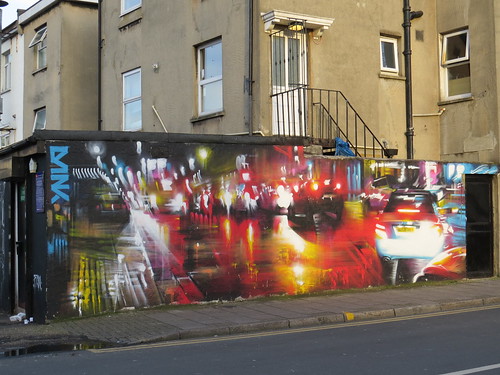
The one right on Evelina Road is called “Jam” by Dan Kitchener. A first glance it is just a blur of colour but then you see it is a street scene on a rainy night.
And just behind is another one. This is called “Work” by DZIA.
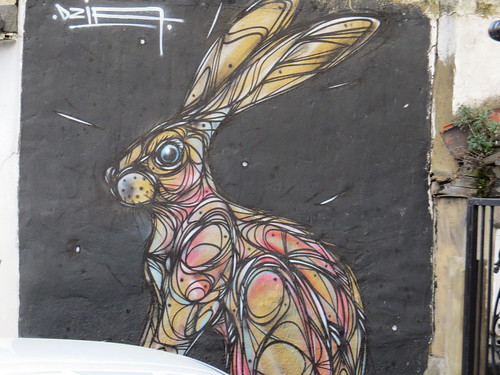
There is quite of lot of this street art around. You just keep spotting it. It seems there are around 100 spray paint art works around Penge. There is even a trail you can follow more of which anon.
Now keep walking along Evelina Road and you get to the back of the Blenheim Centre. If you keep walking and follow the road round to the right you get to Blenheim Road.
According to the Notable Abodes site, Number 36 Blenheim Road was the childhood home of former Rolling Stone Bill Wyman, from 1936 to 1958 – though when he lived here he was called William Perks. Notable Abodes notes the house has since been demolished – in fact the highest number house in Blenheim Road today in Number 6. So there’ll be no plaque to Bill round here, I guess.
At the end of Blenheim Road turn right and head back to the High Street. Our next stop is on the other side of the High Street and slightly to the right.
Stop 3: Penge Triangle
Over the road is a paved area which goes by the name of the Penge Triangle and which is dominated by this umbrella like thing.

This is supposed to echo the wing structures of a pterodactyl – a passing reference no doubt to the dinosaurs just up the road in Crystal Palace Park. It was created in 2001 and is actually a clock.
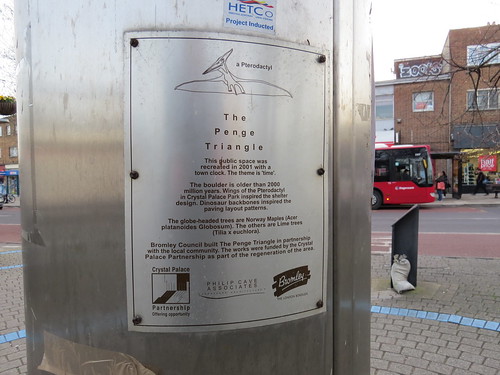
Our next stop is just along the High Street on the right. You cannot really miss this.
Stop 4: Former Free Watermen and Lightermen’s Almhouses
Standing in its own grounds protected from the riff raff of Penge by high fences and gates, here we have the former Free Watermen and Lightermen’s Almhouses.
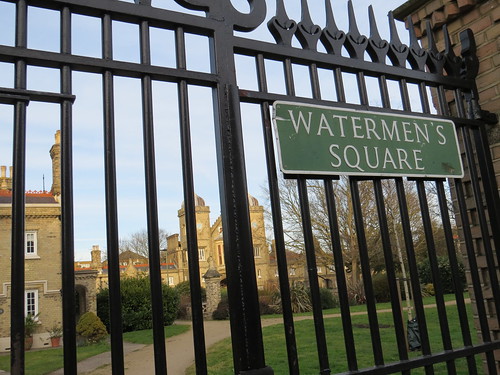
As the name suggests, these were built by the Watermen and Lightermen’s Company – the City Livery Company for people who work on the river Thames. I had not really thought about this but the difference between Watermen and Lightermen is that the former carry passengers whilst the latter carry goods and cargo. (at least that’s what the Company website says)
These almshouses were for retired Company Freemen and their widows Architectural commentator Pevsner says these were built in 1840/41 “when Tudor was the inevitable style for almshouses”. . They ceased to be an almshouse in 1973 when the residents moved to Hastings. Today there are 51 bungalows in Hastings, still providing housing for Watermen and Lightermen of the River Thames or their widows/widowers.

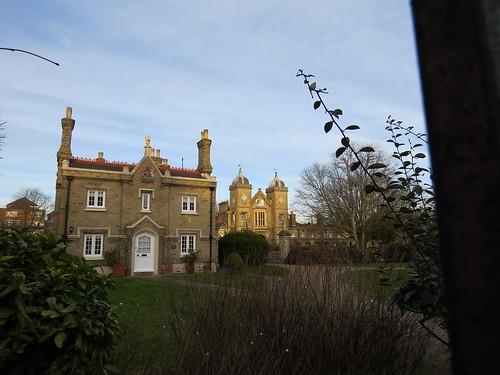
There is a nice piece about the history of the almshouses and about how they ended up being built in Penge rather than New Cross as originally intended.
https://pengepast.wordpress.com/2017/03/17/penge-by-design-the-watermens-almshouses/
Continue past the former almshouses and our next stop is on the right.
Stop 5: St John’s Church
St John’s Church stands proud next to the almshouses and is a typical confident Victorian church. It dates from 1850 with additions made in the 1860s.

Pevsner does not exactly go over board with this church, noting “The best thing inside is the open timber roofs, those in the transepts especially provocative, with beams from all four directions meeting in mid air.”
Opposite the church on the other side of the main road is Penge’s war memorial.
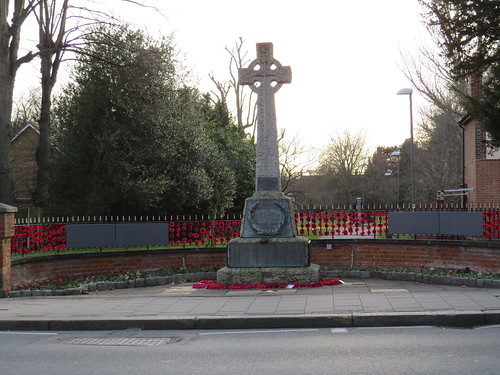
A closer look reveals the poppies are not all they seem.

They are knitted!

Now go back over the High Street and down St John’s Road. Our next stop is soon on the right.
Stop 6: Queen Adelaide Court
This is a post war development on a site damaged by bombing.
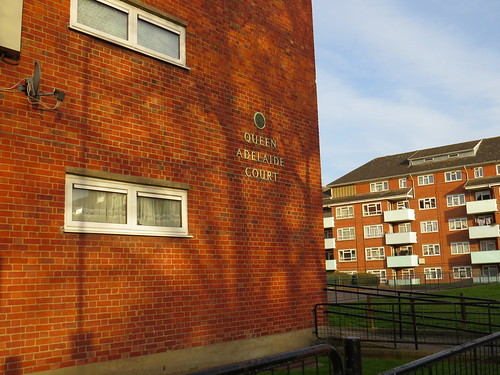
Just above the name on the side of the building you will see a little medallion.

Note the Latin motto: Suum cuique”. This is often translated as “to each his own”.
Penge has had an interesting relationship with London, having been both in Surrey and in Kent. It was once connected to the parish of Battersea and historically was in the county of Surrey.
According to Wikipedia:
“Penge formed part of the County of London from 1889. In 1900 the local government arrangements in the County of London were reformed by the London Government Act 1899. Provision was made for Penge to be combined with either the Metropolitan Borough of Camberwell or the Metropolitan Borough of Lewisham in the County of London, to be combined with the County Borough of Croydon, or to form an urban district in the counties of Surrey or Kent. Had it become an urban district in Surrey, the County Borough of Croydon would have made it an exclave of the administrative county, and in the event it was transferred to Kent as an urban district.”
Then when London local government was reformed in 1965 Penge Urban District was merged in to the new London Borough of Bromley.
Bromley does not think it is really in London. And I guess this helps explain why virtually none of the street name plates have the mention of this being SE20 – a London postal district.
Going back to St John’s Road you will see another little plaque on the building, noting it won an Award for Merit in the Festival of Britain in 1951.
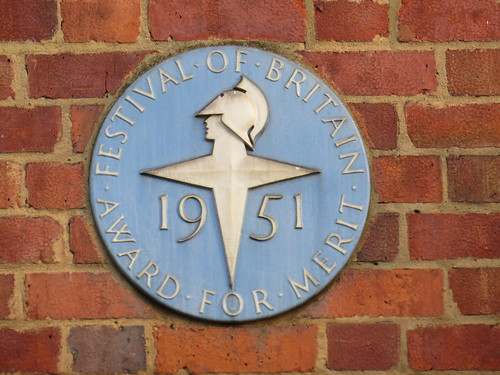
Our next stop is on the other side of St John;s Road.
Stop 7: King William IV Gardens (former King William Naval Asylum)
And here are some more Tudor style 19th century almshouses. Funded in 1847, designed by Philip Hardwick (best known for old Euston station) and paid for by Queen Adelaide, by then the widow of King William IV, these were for the widows of naval officers. William served in the Royal Navy in his youth and had the nickname of the “Sailor King”.

Oddly the street named King William IV Gardens seems to encompass the estate, with the little cottage style buildings looking into a green area, which can be seen through the fence (and which you cannot see in the photo!).

Pevsner says the Naval Asylum is “not only more correct than Porter (the Watermen’s architect) could manage to be, but much more sensitively designed.”
Continue along St John’s Road and our next stop is ahead as the road turns to the left.
Stop 8: Penge East Station
Here we have a quite well preserved station in yellow London stock brick with accents of red and blue brick to decorate the main building.

This is one of two stations in Penge. Here we have Penge East. It was built by the London Chatham and Dover Railway in 1863. It was called Penge or Penge Lane, and was only renamed Penge East in July 1923, presumably when the newly formed Southern Railway found they had two stations called Penge.
When the line was built there was a level crossing but this was removed in about 1879 and the traffic had to find other ways to cross. The covered footbridge was presumably added when the level crossing was taken out as it dates from the 1880s.

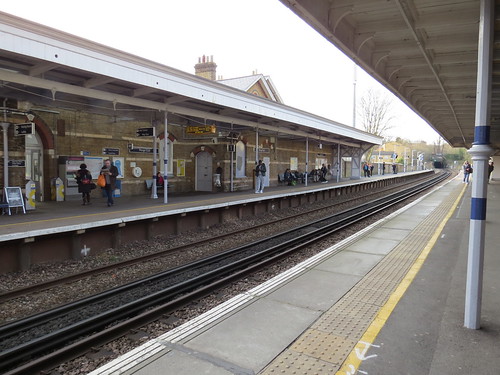
Opposite the station you might have spotted some rather distinctive street art on the corner of St John’s Road. This is actually at the start of a trail you can follow. Here is a link::
A Free Street Art Guide To Penge & Anerley
Immediately facing the station is ‘Golden Goddess’ by Carleen De Sozer.
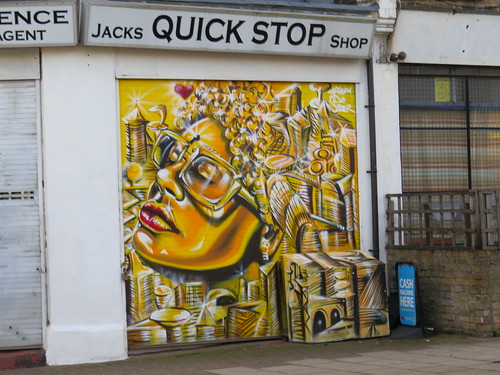
Then back down St John’s Road you will see various pieces – by Artista, Chinagirl Tile & Dope.
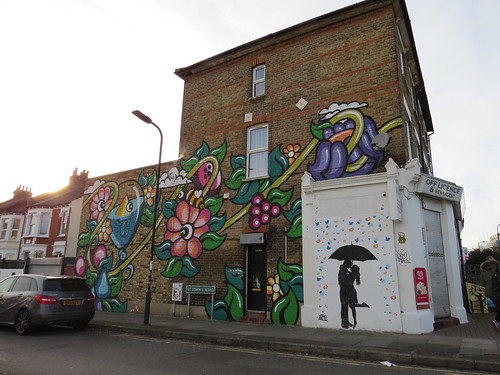
There is one (just behind that grey car in the picture above) which does not appear in the Street Art Guide. It looks freshly painted.

This is by by TRUST iCON and is apparently called “Stop and Search”.
Now go back to the station and follow Station Road which then turns and becomes Crampton Road. Go to the end and then turn right into the High Street. Go under the first railway bridge and note the bricked up entrance on the left just before the pub.

Here we pass what I think was one of the original entrances to Penge West station. Turn left after the pub into Anerley Park. Note the other railway bridge ahead. This carries the line that goes into Crystal Palace.

And if you kept going along the road you would soon get to the end of Crystal Palace Park, near where we left off with the dinosaurs in SE19. (I think in fact those dinosaurs may actually be in SE20) .
Once round the corner, take the first left. Our next stop is straight ahead.
Stop 9: Penge West station
It has to be said that Penge West station is a somewhat less impressive affair that Penge East.
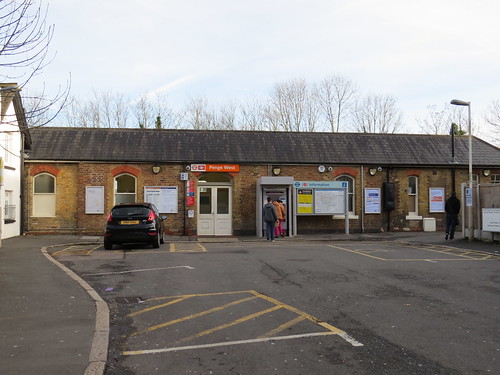
The building is meaner and when you get to see the platforms you find that country bound platform has lost whatever buildings it might have had.


The first station here was built by the London and Croydon Railway in 1839. Wikipedia suggests this was probably more for logistical reasons than anything else: the railway crossed the nearby High Street by a level crossing, and the station would have provided a place for trains to wait while the crossing gates were opened for them. The population of Penge was only around 270 at this time, not enough to make the station commercially viable.
The station was closed in 1841, and the level crossing was converted to a bridge soon afterwards. The entrance to the station was actually on Penge High Street, and not its current position. As we saw there is evidence of what looks like an original entrance.
The station was reopened by the London Brighton and South Coast Railway on 1 July 1863. This was the same day that the London Chatham and Dover Railway opened its own Penge Lane station. No doubt the Brighton company decided it ought to cash in on this location. Penge’s population had risen to over 5,000 and the arrival of Crystal Palace in the 1850s had also created a demand for improved transport.
This odd history probably explains why the next station down the line is so close. Look down the line and you can see Anerley station. This is where we are going to next (This image has been foreshortened by the camera and so over emphasises the closeness)

There are three ways you can get to Anerley station from here. You can return to Anerley Park and turn left and follow that. Or you can go back to the High Street and turn right and follow Oakfield Road and Annerley Station Road. Or finally you can hop on a train. There are usually 6 an hour..
Stop 10: Anerley station
Anerley station is even less impressive than Penge West, having lost all its original buildings. It must be quite a lonely station at night, living up to its name.


The station was opened originally as Anerley Bridge by the London and Croydon Railway in 1839.
There is a curious story about how this area came to be called Anerley according to Wikipedia. .
When the station opened, it was situated in a largely unpopulated area, but was built as part of an agreement with the local landowner. This may explain its closeness to what is now Penge West.
The landowner was William Sanderson, a Scotsman, and, when asked for the landmark by which the station would be known, it is said he replied “Mine is the annerly hoose”. According to the London Encyclopaedia, the name Annerley was a northern dialect word meaning “alone” or “lonely”.
The London and Croydon Railway amalgamated with the London & Brighton Railway to form the London, Brighton and South Coast Railway in July 1846, and the station was rebuilt during the widening of the main line during 1849/50.
Now head up to the main road and cross the bridge (if you have come from the station platform or via Anerley Station Road.
Stop 11: former Anerley Town hall
Just by the railway bridge you will see an unlikely looking building which turns out to be the old Town Hall.

It seems odd to find a municipal building in such an out of the way place. This was built as Anerley Vestry Hall in 1878. It became the Town Hall when Penge Urban District Council was formed in 1900. It was enlarged in 1911 and it was used by Penge Council until 1965 when the area became part of the new London Borough of Bromley. It now houses Anerley Library, a various amenity groups.
Now go back over the bridge and a little way along the road you will see a park on the right. This is our next stop.
Stop 12: Betts Park
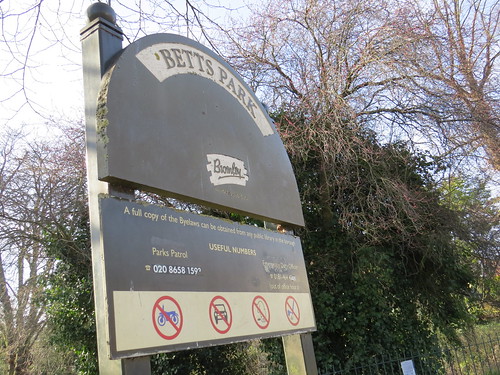
The park was created from land donated by Mr Frederick Betts, a local property owner. It opened in December 1928.
If you head into the park you will see a stretch of water.
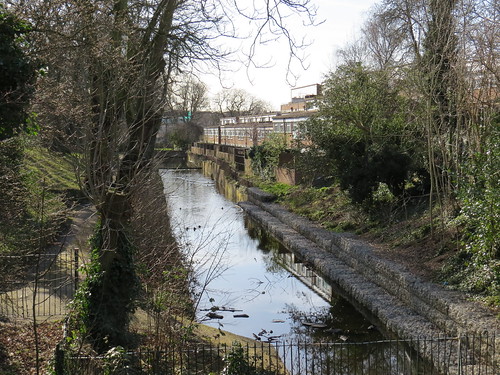
There is a good information panel which explains the significance of this bit of water.

It is about the only part of the Croydon Canal to still have water in it.
The Croydon Canal opened in 1809 but it was never a commercial success and as we heard when we were in SE4 the route was taken over and used by the London and Croydon railway in the 1830s. But here the canal meandered a bit and so the railway took a straighter path, leaving this stretch behind. After the creation of Betts Park, this stretch was reinstated, although it does not go anywhere now.
This brings us to the end of our SE20 walk proper. SE20 turned out to more interesting than I expected with its long lost places of entertainment, two sets of almshouses and three stations plus a load of 21st Century street art. If you want to finish here we are close to Anerley station for onward travel. However I have to include a little postscript because not too far from here is a street with no less than three blue plaques!
Head through the park to the other side and when you get to the road turn right into Croydon Road. Alternatively you can go down Anerley Road to the cross roads and turn right into Croydon Road. You are heading for the fifth side street on the left after the cross roads – this is Thornsett road.
Postscript
Number 12 Thornsett Road (once home of Thomas Crapper)

This was where Thomas Crapper (1837 – 1910) lived for the last 6 years of his life.
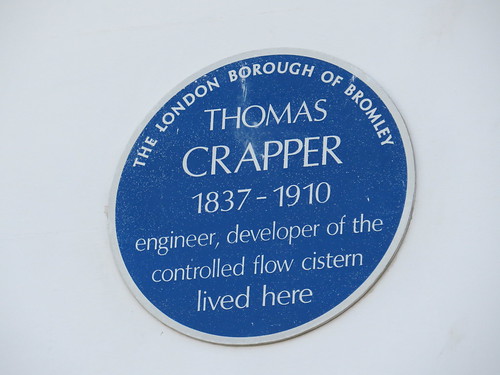
As it says on his blue plaque, he was an “Engineer” and “Developer of the controlled flow cistern”. But it turns out that there is no connection between the word “crap” and Thomas Crapper.
Crap is an old English word which was in use long before Mr Crapper started making and selling toilets in the 19th century.
Here is a link which explains:
http://www.worldwidewords.org/qa/qa-cra1.htm
There is a company today called Thomas Crapper making various toilet related items. But it is a reincarnation. and not the original company set up by Crapper in 1861 and which lasted until the 1960s.
Here is a link to the current company’s site:
https://www.thomas-crapper.com/The-History-of-Thomas-Crapper.html
Now strangely there is a also blue plaque on the house next door.
Number 14 Thornsett Road (once home of Walter de la Mare)

This was the family home of the poet and writer Walter de la Mare between 1912 and 1925.

The Poetry Foundation site says: “As a poet de la Mare is often compared with Thomas Hardy and William Blake for their respective themes of mortality and visionary illumination.”
And finally just a little way along on the other side of the road is our third blue plaque.
Number 21 Thornsett Road: (former home of George Daniels)

This plaque is for George Daniels (1926 – 2011) and is unusual in who was responsible for putting up the plaque.

This plaque is attributed to The Worshipful Company of Clockmakers, The British Horological Institute and the Antiquarian Horological Society. Quite an unusual bunch to be putting up a plaque.
According to Wikipedia: he was “a British horologist who was considered to be the best in the world during his lifetime. He was one of the few modern watchmakers who built complete watches by hand (including the case and dial). But it was his creation of the coaxial escapement for which he is most remembered. The movement, which removed the need to add a lubricant, has been used by Omega in their highest-grade watches since 1999”.
He was also interested in, and collected, classic cars.
More about him on this site: http://www.danielslondon.com/dr-george-daniels-cbe/
So that really does bring us to the end of our SE20 walk. From Thornsett Road you can return to Croydon Road and hop on a bus to Norwood Junction or Penge – or else maybe walk back to Anerley.

